
The Power Law: Venture Capital and the Making of the New Future
by
Sebastian Mallaby
Published 1 Feb 2022
.: Harvard University Press, 2019), 163. BACK TO NOTE REFERENCE 21 The 3Com story that follows was constructed from multiple sources and then verified in an email exchange with Metcalfe. Metcalfe, email to the author, April 2, 2019. BACK TO NOTE REFERENCE 22 Robert Metcalfe, “Oral History of Robert Metcalfe,” interview by Len Shustek, Computer History Museum, Nov. 29, 2006, archive.computerhistory.org/resources/text/Oral_History/Metcalfe_Robert_1/Metcalfe_Robert_1_2.oral_history.2006.7.102657995.pdf. BACK TO NOTE REFERENCE 23 John W. Wilson, The New Venturers: Inside the High-Stakes World of Venture Capital (Reading, Mass.: Addison-Wesley, 1985), 177.
…
In a final mark of caution, East Coasters took risk off the table early, often preferring to sell a portfolio firm to a bigger rival once it had made 5x or so. Because they were making fewer bets that went to zero, they did not feel compelled to drive their winners to 10x or higher. The contrast between the coasts was crystallized in the story of Bob Metcalfe.[22] A self-styled “Viking-American,” with grandparents from Oslo, Bergen, Leeds, and Dublin, Metcalfe sported bushy strawberry-blond hair and wing tip loafers and called himself “a right-wing hippie.”[23] After studies at MIT and Harvard, he moved out west to Xerox PARC, where he seldom used an alarm clock, frequently pulled all-nighters at the lab, and invented a computer-networking technology called Ethernet.
…
Krause called Metcalfe and asked for help. The family conversation had not gone so well. Maybe Metcalfe and Howard Charney could join Gay and him for dinner? The Krauses duly dined with Metcalfe and Charney. Afterward Gay said, “Howard Charney’s the smartest guy I ever met.” Then she added, “Bob Metcalfe’s the most charismatic guy I ever met.” Then she demanded, “What the hell do they need you for?” “Is that a yes?” Krause asked. “Go for it,” Gay responded.[32] With Krause ready to come on board, Metcalfe thought he had what he needed to press for a $20 share price.[33] But even with adult supervision in place, the venture guys were not budging.

Fire in the Valley: The Birth and Death of the Personal Computer
by
Michael Swaine
and
Paul Freiberger
Published 19 Oct 2014
Larry Tesler brought the newest programming techniques to his PARC software. Bob Metcalfe was involved in a technique for networking computers. * * * Figure 81. Bob Metcalfe While working at Xerox PARC, Metcalfe cocreated Ethernet, which became the standard for networking computers. (Courtesy of Richard Shoup) Over several years these engineers and programmers, building in part on the revolutionary work of Douglas Engelbart, created an impressive workstation computer called the Alto. The Alto boasted an advanced language called Smalltalk, an input device borrowed from SRI called the mouse, and that networking technique of Bob Metcalfe’s called Ethernet for connecting individual Altos for communication and cumulation of effort, as if they were one big computer.
…
It did, rapidly and impressively, licensing some browser technology and developing its own browser, Internet Explorer, to compete with Netscape’s browser. The company launched by the young coder and the industry veteran was, in Gates’s opinion, a threat to Microsoft’s existence, and it needed to be snuffed out. Gates was not alone in seeing the Internet as a threat to Microsoft’s dominance in the PC market. Bob Metcalfe, the networking guru who had developed the Ethernet protocol, wrote a weekly column for the industry magazine InfoWorld. In February 1995, he predicted that the browser would in effect become the dominant operating system for the next era. The dominant operating system for the current era was, of course, Microsoft’s Windows.
…
—Lee Felsenstein By 2000 the Internet was an integral part of life for millions of people. Indeed, 350 million or more people were online, the majority of them in the United States. That figure would grow by an order of magnitude over the next decade and a half, and more closely match the relative populations of countries. By 2014, China was home to the most Internet users. Robert Metcalfe’s 1995 prediction that the web browser would become the operating system for the next era had largely come true. If, as Sun Microsystems had famously claimed, the network was the computer, then the browser was the operating system, and single-computer-based operating systems were irrelevant. It wasn’t quite that simple, but websites were becoming more like applications, powered by JavaScript.

Here Comes Everybody: The Power of Organizing Without Organizations
by
Clay Shirky
Published 28 Feb 2008
Other students who have been especially incisive on social topics are Mouna Andraos, Jake Barton, Michelle Chang, John Geraci, Elizabeth Goodman, Christina Goodness, Sam Howard-Spink, James Robinson, Matty Sallin, Nick Sears, Mike Sharon, and Shawn van Every. Alicia Cervini’s careful reading has improved both the ideas and their expression from the first draft. My field has a tradition of thinking out loud. Chris Anderson, Andrew Blau, Stewart Brand, Lili Cheng, Esther Dyson, Hal Levin, Bob Metcalfe, Jerry Michalski, Richard O’Neill, Tim O’Reilly, Peter Schwartz, Andrew Stolli, and Kevin Werbach all provided both observations and public platforms for the development of this work. Articles written for Chris Anderson for Wired and Thomas Stewart for Harvard Business Review did likewise. Long-running conversations with many colleagues have provided material and insights for this book.
…
This increase in scale, both of the underlying social media and of the population that uses it, is still creating surprises because large systems behave differently from small ones. One fitting name for the way more is different is “the network effect,” the name given to networks that become more valuable as people adopt them. Robert Metcalfe, the inventor of the Ethernet networking protocol, gave his name to a law that describes this increase in value. Metcalfe’s Law is usually stated this way: “The value of the network grows with the square of its users.” When you double the size of the network, you quadruple the number of potential connections.
…
CHAPTER 2: SHARING ANCHORS COMMUNITY Page 25: Birthday Paradox Wikipedia contains a good general guide to the Birthday Paradox, at en.wikipedia.org/wiki/Birthday_paradox. (As always, Wikipedia also contains links at the bottom of the article to additional materials on the subject.) An alternate formulation of the same math is expressed as “Metcalfe’s law.” Robert Metcalfe, inventor of a core networking technology called Ethernet, proposed that “the value of a network rises with the square of its members,” which is to say that when you double the size of a network, its value quadruples, because so many new links become possible. Metcalfe’s law isn’t true in any literal sense, because not all links are created equal—being able to contact your friends matters more than being able to contact someone you’ve never heard of who lives on the other side of the world.

Life After Google: The Fall of Big Data and the Rise of the Blockchain Economy
by
George Gilder
Published 16 Jul 2018
Daniel Colin James, “This Is How Google Collapsed”, Hacker Noon: Where hackers start their afternoons, April 27, 2017. https://hackernoon.com/how-google-collapsed-b6ffa82198ee 7. Ibid. Most of these numbers come from the Daniel Colin James blog. Chapter 5: Ten Laws of the Cryptocosm 1. “Safety Last” is the principle of Ethernet inventor Bob Metcalfe. 2. The source of the image of M&A unicorns and IPO gazelles is the financier-philosopher William Walton. Chapter 6: Google’s Datacenter Coup 1. George Gilder, “The Information Factories,” Wired, October 1, 2006. I originally made this trip as a contributing editor of Wired and much of the prose in the chapter, including the opening paragraphs, originally appeared in Wired.
…
Main Street: The symbol of the real economy of workers paid hourly or monthly and sealed off from the accelerated circular loops of Wall Street moneymaking. Perhaps the street where you live, Main Street is the site of local businesses and jobs. Metcalfe’s Law: The value and power of a network grows by the square of the number of compatible nodes it links. Named for the engineer Robert Metcalfe (1946–), a co-inventor of Ethernet, this law is a rough index and deeply counterintuitive. (The Internet is worth less than the square of its six billion connected devices.) But the law applies to smaller networks, and it explains the vectors of value creation of companies such as Facebook, Apple, Google, and Amazon, which now dominate stock market capitalization.

The Elements of Power: Gadgets, Guns, and the Struggle for a Sustainable Future in the Rare Metal Age
by
David S. Abraham
Published 27 Oct 2015
Gordon Gable, “Top 10 Bad Tech Predictions,” Digital Trends, November 4, 2012, accessed December 19, 2014, http://www.digitaltrends.com/features/top-10-bad-tech-predictions/4/#ixzz2s4mjo7iC. 19. Erin Skarda, “Top 10 Failed Predictions,” Time, October 21, 2011, accessed December 20, 2014, http://content.time.com/time/specials/packages/article/0,28804,2097462_2097456_2097467,00.html. 20. Bob Metcalfe, “From the Ether: Predicting the Internet’s Catastrophic Collapse and Ghost Sites Galore in 1996,” Info World, December 4, 1995, http://bit.ly/1AlCm3B. 21. K. Binnemans, P. T. Jones, K. Acker, B. Blanpain, B. Mishra, and D. Apelian, “Rare-Earth Economics: The Balance Problem,” JOM, 2013, http://www.kuleuven.rare3.eu/wp-content/plugins/rare/images/papers/binnemans_jom_2013.pdf; Molycorp, “Advanced Communications,” accessed December 19, 2014, www.molycorp.com/technology/green-element-technologies/advanced-communications; APS Physics, “New Prototype Magnetic Refrigerators Hold Commercial Promise,” accessed December 19, 2014, www.aps.org/publications/apsnews/200305/refrigerators.cfm; Binnemans et al., “Rare-Earth Economics: The Balance Problem.” 22.
…
People will soon get tired of staring at a plywood box,” Darryl Zanuck, founder of Twentieth Century Pictures (1946).18 • “There is no reason anyone would want a computer in their home,” Ken Olsen, founder of Digital Equipment Corporation (1977).19 • “I predict the Internet … will soon go spectacularly supernova and in 1996 catastrophically collapse,” Robert Metcalfe, founder of 3Com and the Ethernet (1995).20 Since we don’t know which invention will take off, we can’t estimate which rare metal will either. Thirty years ago, dysprosium had little use. Now, in part because of its use in magnets, it is essential for our new high-tech lives. Gallium, because of its low melting point, could find itself in high demand in 3D printing, a type of home-based manufacturing.
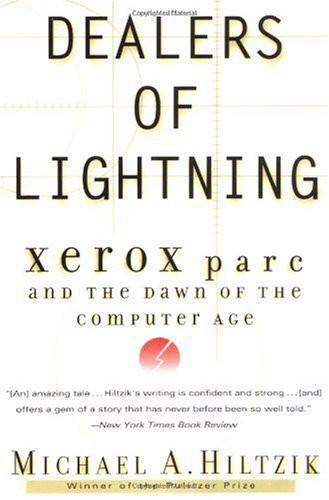
Dealers of Lightning
by
Michael A. Hiltzik
Published 27 Apr 2000
Elkind, laboratory manager (1971–1978) Robert W. Taylor, associate manager Butler W. Lampson, key contributor to the Alto personal computer, Ethernet networking system, laser printer, Mesa programming language, Dorado computer, Dandelion processor Charles P. Thacker, designer of MAXC time-sharing system and Alto and co-inventor of Ethernet Bob Metcalfe, principal inventor of Ethernet David Boggs, co-inventor of Ethernet Dick Shoup, inventor of Superpaint, pioneering video graphic device Charles Simonyi, developer of Bravo word processing program with “what you see is what you get” (WYSIWYG) capability Peter Deutsch, expert programmer Ed McCreight, hardware designer of MAXC time-sharing system and the Alto Ed Fiala, co-designer of MAXC Ron Rider, designer of the research character generator, adjunct to the laser printer John Ellenby, head planner of Futures Day presentation (1977), at which PARC technology was introduced to Xerox senior management Charles Geschke, co-developer of Mesa programming language and Interpress page description language John Warnock, co-developer of Interpress and other printing and page description systems Severo Ornstein, supervisor of the Dorado computer project SYSTEMS SCIENCE LABORATORY William F.
…
June-August: Kay and a hand-picked team complete the first version of their revolutionary object-oriented programming language, Smalltalk, which will heavily influence such modern programming systems as C++ and Java. November: Starkweather completes work on the world’s first laser computer printer. June: Bob Metcalfe encounters a technical paper describing Hawaii’s ALOHAnet, several principles of which he will incorporate into Ethernet. September: MAXC having been completed, Thacker and Lampson invite Kay to join their project to build a small personal computer. The machine will be known as the Alto. November 22: Thacker begins design work on the Alto.
…
Starkweather’s SLOT and Rider’s character generator were two of the four legs of the complete interactive office environment PARCwas creating on the fly. In the same period Thacker, McCreight, and Lampson were building the Alto; Alan Kay and his Learning Research Group were designing a graphical user interface aimed at making computers intuitively simple to use; and Bob Metcalfe and David Boggs were designing a network—the Ethernet—to tie all the other components together. “We had in mind that you ought to be able to create a file on the Alto and ship it via the Ethernet to a print server [that is, a communal computer managing everyone’s print orders], which would convert it to a raster and print it out,” Rider recalled.

Where Wizards Stay Up Late: The Origins of the Internet
by
Katie Hafner
and
Matthew Lyon
Published 1 Jan 1996
But there wasn’t enough natural traffic on the network to really push the limits of the routing and anticongestion schemes. There were some interesting early uses. Programmers at SRI were using Utah’s PDP-10 compiler in preparation for installing their own PDP-10, and they generated the most actual traffic. Jon Postel at UCLA was using the network to run SRI’s oNLine System. Bob Metcalfe, a Harvard graduate student working at MIT, and a friend, Danny Cohen, who taught at Harvard, did one of the more exciting early experiments over the network. Metcalfe and Cohen used Harvard’s PDP-10 to simulate an aircraft carrier landing and then displayed the image on a graphics terminal at MIT.
…
At the moment, however, the turtle was jumping up and down, twitching and jerking crazily. Instead of sending Postel’s file to the printer, the system had accidentally sent it to the turtle port, and the robot dutifully offered its interpretation of what it took to be motion commands. As an enthusiastic graduate student, Bob Metcalfe had undertaken the task of writing a booklet to accompany the demonstrations. It described nineteen scenarios for using the ARPANET, listed resources at various sites, and showed how to log on to a remote host, how to gain access to one of the applications, and how to control a program or engage in some kind of interactive communication over the network.
…
With a clean separation of the protocols, it was now possible to build fast and relatively inexpensive gateways, which would in turn fuel the growth of internetworking. By 1978, TCP had officially become TCP/IP. ETHERNET In 1973, just when Cerf and Kahn had begun collaborating on the concept of internetworking, Bob Metcalfe at Xerox PARC was inventing the technological underpinnings for a new kind of network. Called a short-distance, or local-area, network, Metcalfe’s network would connect computers not in different cities but in different rooms. Metcalfe had received his undergraduate degrees in electrical engineering and management from MIT and enrolled at Harvard for graduate school.
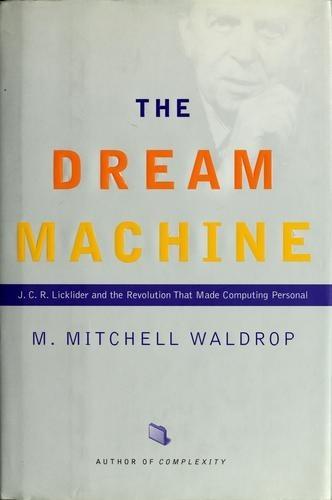
The Dream Machine: J.C.R. Licklider and the Revolution That Made Computing Personal
by
M. Mitchell Waldrop
Published 14 Apr 2001
Somehow, Taylor told his people, you have to network these machines together; otherwise, you'll be tak- ing a giant step backward, graphics or no graphics. Fortunately, however, Thacker and his colleagues didn't really have to focus on communications. For something like six months now, PARC had had an ex- perienced networking hotshot hard at work on the problem-a relatively new re- cruit by the name of Bob Metcalfe. In an odd sort of way, admits Bob Metcalfe, a lot of the credit for the network he developed at PARC has to go to the applied-mathematics department at Har- vard University: he hated it. In fact, he'd spent his entire graduate career there staying as far away as possible-which was why he'd actually done his Ph.D. re- search for money, working on the Arpanet as a full-time staffer for J.
…
On the communications front, meanwhile, the proliferation of Macs and PC clones was very good news for networking start-ups such as 3Com, which had al- ready begun to prosper by selling Ethernet products for VAXes and worksta- tions. Indeed, the personal-computer revolution was what transformed the Bob Metcalfe of 1979 into the Bob Metcalfe of today: the proud possessor of a farm in Maine, a town house suitable for an embassy in Boston's tony Back Bay neighborhood, a prestigious second career in technology journalism, and a per- sonal fortune that amounts to a noticeable fraction of Bill Gates's. "I tell people I didn't get rich inventing Ethernet," he says with a laugh.
…
Given the nature of inter- active computing, in fact, even the fieriest activists among them could argue that they were co-opting the Pentagon, and not vice versa. They were striking a blow for intellectual freedom. They were liberating human potential. And not incidentally, they were liberating a few dollars that might otherwise be spent on B-52s. "That was the lie we told ourselves," recalls a wry Bob Metcalfe, then an undergraduate computer-science major at MIT: "Our money was bloody on only one side." Then, too, many of these kids were nothing if not escapist. The obsessive techno-weenies who haunted the terminal rooms of Project MAC and the other ARPA sites were children of the sixties, all right.
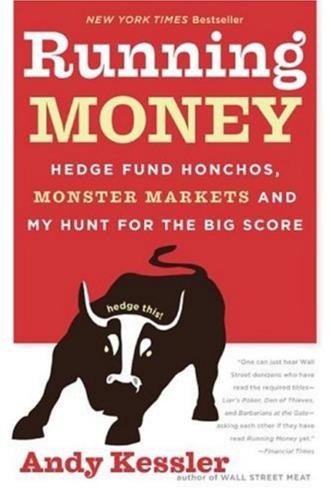
Running Money
by
Andy Kessler
Published 4 Jun 2007
It was lunchtime at George Gilder’s Telecosm conference, and we were waiting for the featured speaker, Gary Winnick of Global Crossing, to explain how he sends billions of packets per second under the Atlantic Ocean. George Gilder has hosted his Telecosm conference for years. Tech luminaries like Carver Mead, Bob Metcalfe and Paul Allen were regulars. “I don’t know what the first packet was,” I confessed. My tablemate turned out to be Leonard Kleinrock, a UCLA professor, according to his name tag. It turned out that he had been at the creation. Since the 1978 introduction of the Apple II computer, to the 1981 announcement of the IBM PC, the world has been flooded with smaller, cheaper and faster computers.
…
It’s almost as if you become desensitized to the pace of advance because it becomes expected. Bored to tears, I scanned the room for someone, anyone, to give the high sign to, to make a quick exit to coffee and jokes in the hall. Nick Moore wasn’t here, damn. My eyes got stuck in the middle of the room. There was Bob Metcalfe staring at the slide, looking at the line going up and up Packet Racket 189 and up. He was shaking his head with a look of both amazement and disbelief, and this was the guy that invented it. After a dozen of those IMP nodes were up and running, it was time to start giving demos to people who mattered.
…
One of the ARPANET researchers was in charge of giving a demonstration to some bigwigs from AT&T. Keep in mind that the phone network was engineered to fail for only two minutes every 40 years. That is one of those six nine’s, or four to the right of the decimal point, or 99.9999% reliability. As the story goes, researcher Bob Metcalfe was in the middle of demonstrating the packet network when, like any good demo, it crashed. This put smiles on the faces of those 10 AT&T execu-humps, and they merrily skipped back to headquarters singing the stillbirth of packet switching. Of course, they were right for another 30 years, but packet switching would eventually be trouble for circuit-switched phone networks.
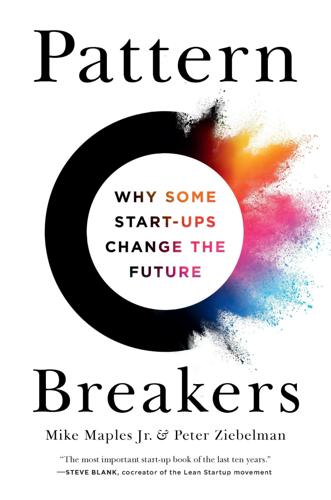
Pattern Breakers: Why Some Start-Ups Change the Future
by
Mike Maples
and
Peter Ziebelman
Published 8 Jul 2024
They enable you to see that the way people live at present isn’t compulsory. The world as it exists now—the world that is—represents just one way among many that the world could be. To further clarify this idea of living in the future, and why it’s so vital, consider our next notable pattern breaker, Bob Metcalfe, the ethernet’s coinventor. In the 1970s, Bob was at Xerox PARC (Palo Alto Research Center), which holds a unique place in the annals of computing history. Xerox PARC was the birthplace of game-changing technologies like the mouse, the windowing interface, and the laser printer, years before they were popularized by Apple and others.
…
In his efforts to network computers at the lab to share one of the world’s first laser printers, he came to believe that his insights into interconnectivity would be valid someday for most computer users. This led him to start 3Com, one of the first major PC Ethernet companies. His insight was spot-on. Ethernet emerged as the leading networking standard due to its simplicity, adaptability, and versatility, seamlessly integrating local and wide area networks. Marc Andreessen and Bob Metcalfe both tackled issues rooted in their advanced computing experiences, anticipating that their solutions would become essential for the broader public as technology evolved to match their current environment. Crucially, in both instances, Marc and Bob didn’t need to discard old habits to develop innovative solutions.
…
Crucially, in both instances, Marc and Bob didn’t need to discard old habits to develop innovative solutions. Instead, by immersing themselves in environments representing a future that only a few were witnessing, they gained fresh perspectives. This direct experience with new challenges naturally guided them to nonobvious insights. Interestingly, the insights uncovered by Marc Andreessen and Bob Metcalfe that led to Netscape and 3Com show how living in the future can unearth ideas that morph into groundbreaking businesses without the initial intent of starting companies. Airbnb and Facebook are more recent examples. Airbnb, as we described earlier, began as a way for Brian Chesky and Joe Gebbia to get extra money for rent.

Troublemakers: Silicon Valley's Coming of Age
by
Leslie Berlin
Published 7 Nov 2017
As a result, he could handpick his team.VIII “All it took was a few phone calls from Taylor and the chosen researchers signed up,” recalled one Xerox executive.20 Taylor began recruiting at the University of Utah. He swept in several employees from Bolt Beranek and Newman. At Harvard, he pursued the networking expert Bob Metcalfe, even after Harvard balked at giving Metcalfe a PhD.VII Closer to home, Taylor bypassed the young microchip and electronics operations to pursue clusters of talent with academic, not business, leanings. From Berkeley, he plucked a group that had worked together on an ARPA project at the University of California and then launched a commercial operation near the campus.
…
Taylor, a competitive tennis player, enjoyed challenging the best players at PARC to hard-core, sweat-streaming matches on the court behind his neighbor’s home. Afterward, the players would adjourn to Taylor’s house. “The Dr Pepper was cold, the doors were open, a breeze was blowing through, and everyone was always welcome to come in,” recalls Bob Metcalfe.27 During the weekly lab meetings, Taylor also spent time fielding complaints. The cafeteria food was bad. Equipment was inadequate. Secretaries were overworked. Surprisingly often, grumblings about balky Xerox copiers led the list of problems. Taylor listened and took careful notes. He knew that truly creative computer scientists tend to be opinionated individualists.
…
Again and again over the course of the next decade, Taylor would try to interest the company’s leadership in the technology coming out of the computing labs at PARC. His efforts would meet with little success. In early 1972, the lab was at a critical point. The MAXC computer was almost complete. Soon Bob Metcalfe would connect it to the Arpanet, the computer network that Taylor had kick-started in 1966 when he was at ARPA. Researchers were beginning to complain that the final-stage refinements were “depressing” and too far removed from basic research.42 Around this time, Jerry Elkind, Taylor’s PhD-bearing boss, asked whether Xerox should “buy the ARPANET.”
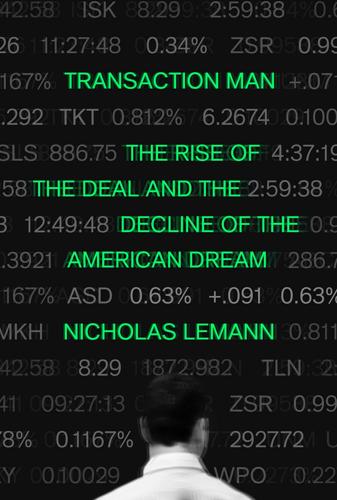
Transaction Man: The Rise of the Deal and the Decline of the American Dream
by
Nicholas Lemann
Published 9 Sep 2019
A broadcast-era business maxim, called Sarnoff’s law after the founder of NBC, was that the value of a network varies arithmetically with the size of its audience. Silicon Valley’s updated twenty-first-century version was Metcalfe’s law (named after Bob Metcalfe, the inventor of Ethernet technology, which permits direct, noncentralized communication between computer workstations), which has it that the value of a network varies exponentially with its number of users. (As a young engineer helping to design an early automatic teller machine for Chase Manhattan Bank, Bob Metcalfe was given a brief audience with the bank’s chairman, David Rockefeller, who had on his desk a five-foot-wide custom-built Rolodex containing more than a hundred thousand cards.
…
“all based on a theory”: Office of the Special Inspector General for the Troubled Asset Relief Program, “Factors Affecting the Decisions of General Motors and Chrysler to Reduce Their Dealership Networks,” July 19, 2010, 31. “The report was ludicrous”: Rattner, Overhaul, 302. 6. NETWORK MAN you might well wind up in Silicon Valley: General background and history about Silicon Valley comes from author’s interviews with Arthur Rock, Hal Varian, Laszlo Bock, AnnaLee Saxenian, Bob Metcalfe, Ben Rosen, Reid Hoffman, Thomas Perkins, John Doerr, John Lilly, David Sze, David Hahn, Michael Mandel, Joe Kraus, Josh Kopelman, Nancy Lublin, Joi Ito, Peter Thiel, Simon Rothman, George Arison, David Sanford, Mark Pincus, Jeff Weiner, Premal Shah, James Manyika, Evan Williams, Allen Blue, Ann Miurako, John Etchemendy, Mike Maples, Roy Bahat, Terry Winograd, Ian McCarthy, Jen Pahlka, Tim O’Reilly, Linda Rottenberg, Ben Casnocha, and Dan Portillo.
…
Foundations of Sociometry, Group Psychotherapy and Sociodrama, Beacon, 1953. “The Strength of Weak Ties”: Mark S. Granovetter, “The Strength of Weak Ties,” American Journal of Sociology, Volume 78, Number 6 (May 1973), 1360–80. “much as levies were imposed”: Hoffman, Blitzscaling, 84. As a young engineer: Author’s interview with Bob Metcalfe. “First prize is a Cadillac Eldorado”: Hoffman, Blitzscaling, 11. In 2014 Hoffman and two of his protégés: See Reid Hoffman, Ben Casnocha, and Chris Yeh, The Alliance: Managing Talent in the Networked Age, Harvard Business Review Press, 2014. The Start-Up of You: Reid Hoffman and Ben Casnocha, The Start-Up of You: Adapt to the Future, Invest in Yourself, and Transform Your Career, Crown Business, 2012.

Valley of Genius: The Uncensored History of Silicon Valley (As Told by the Hackers, Founders, and Freaks Who Made It Boom)
by
Adam Fisher
Published 9 Jul 2018
Everywhere there were these large tracts of prune orchards and every month another orchard would be taken down and they’d pile up all the cut trees next to a sign that said “free firewood” and soon there would be a concrete tilt-up there. The center of gravity was Mountain View and Sunnyvale, where Fairchild and Intel and National Semiconductor were. Bob Metcalfe: Intel was just getting started. There was no Apple. There was a Hewlett-Packard, but they barely made computers, just barely. They were old and respectable, but a tiny little company. Al Alcorn: The Valley at the time in the sixties and seventies was dominated by military stuff: Lockheed and all these big places—and semiconductor companies.
…
And it was extremely clear that they were wildly uneconomical at the time we built them. Alan Kay: Through money—and assuming Moore’s law—you can basically put a supercomputer on a desk, which is what we did. Dan Ingalls: It was almost a free ride, because so many things were just ready to be invented: The entire world of bitmapped graphics was there to be invented. Bob Metcalfe: And it was California, so we rode bicycles. I remember we used to ride our bikes along Arastradero Road over to Alpine Road and go to the Alpine Inn at lunchtime. We would drink beer at lunch, and that meant the afternoon was gone and that work might resume that evening after dinner. It was very laid-back.
…
Dick Shoup: But of course from our point of view we were proud to be on the leading edge and trying to move Xerox and anybody else who would listen into the future, because we could see what was coming. Stewart Brand (writing in Rolling Stone): When computers become available to everybody, the hackers take over. Bob Metcalfe: Right after we finished MAXC we started work on the Alto computer, arguably the world’s first personal computer. Chuck Thacker: And we finally started listening to Bob Taylor, who had been telling us what to do for a long time but we didn’t understand it. Bob Taylor: The design center of computers in those days was the arithmetic unit.
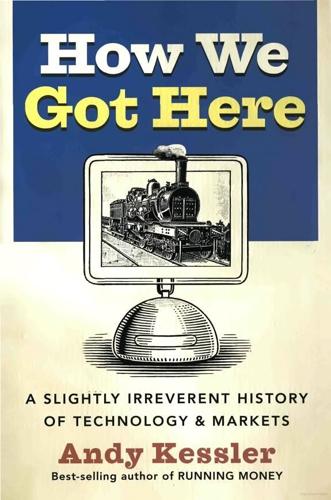
How We Got Here: A Slightly Irreverent History of Technology and Markets
by
Andy Kessler
Published 13 Jun 2005
Worldcom and Global Crossing tried to revive the corpse with accounting tricks to buy themselves time to move to packets, hence the accounting scandals in 2002. In the fall of that year, I sat at the same table with Bob Metcalfe during a presentation on the future of networking. The talk was dull, but as a slide demonstrating uses of 10 gigabit and soon 100 gigabit Ethernet networks flashed on the screen, I noticed a funny look on Bob Metcalfe’s face: He was half stunned, half amused that Ethernet is still scaling from those 2.94 megabit per second beginnings. 150 HOW WE GOT HERE Metcalfe is also known for another famous observation – that the value of a network goes up by the square of the number of nodes attached to it.
…
One of the ARPANET researchers was in charge of giving a demonstration to some bigwigs from AT&T. Keep in mind that the phone network was engineered to fail for only 2 minutes every 40 years. That is one of those 5 nine’s to the right of the decimal point or 99.99999% reliability. As the story goes, Bob Metcalfe was in the middle of demonstrating the packet network when, like any good SOFTWARE AND NETWORKS 147 demo, it crashed. This put smiles on the face of those 10 AT&T execuhumps, and they merrily skipped back to HQ singing the stillbirth of packet switching. Of course, they were right for another 30 years, but packet switching would eventually be trouble for circuit-switched phone networks.
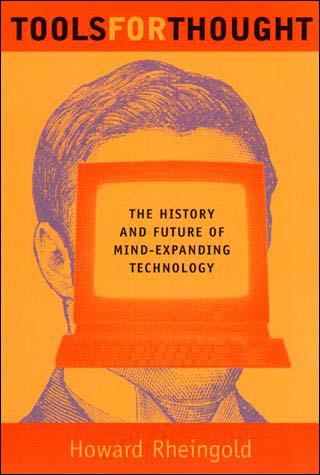
Tools for Thought: The History and Future of Mind-Expanding Technology
by
Howard Rheingold
Published 14 May 2000
The people who built the first interactive, multiaccess computers, the first intellectual augmentation systems, and the first packet-switching computer networks were gathering under the same roof for the first time, in order to turn those dreams into prototypes as soon as possible. Butler Lampson, Chuck Thacker, Jim Mitchell, Ed McCreight, Bob Sproull, Jim Morris, Chuck Geschke, Alan Kay, Bob Metcalfe, Peter Deutsch, Bill English -- to those who knew anything about the esoteric world of computer design, the PARC computer science founders constituted an unprecedented collection of talents. It wasn't the kind of shop where old-style hierarchies and pecking orders would do any good. You don't run an outfit like that as much as you mediate it -- which is where Bob Taylor came in.
…
The PARC folks were hungry for personal computing power, but they didn't want to give up that hard-won and effort-amplifying community they were just beginning to know on the ARPAnet. Dan Swinehart, an SRI alumnus who joined PARC early in the game, remembers that "From the day the Alto was proposed, Butler Lampson and Bob Metcalfe pointed out that if we were going to give everybody at PARC a self-contained computer instead of hooking them all into a central time-sharing system, we'd need a connecting network with enough communicating and resource-sharing capability that the people at the personal work stations wouldn't be isolated from each other."
…
But when Xerox failed to become the first name in the industry, and the hobbyist side of personal computing had grown to the point where some of the original hobbyists were recruiting PARC scientists and building their own personal computer empires, the first high-level PARC defectors began to seed the rest of the industry with the user interface concepts embodied in the Star. Bob Metcalfe, the man responsible for the creation of the Ethernet, left to start 3-Com, a company specializing in local area network technology. Alan Kay, whose Smalltalk team made impressive contributions to the Star interface, left to become the chief scientist at Atari. John Ellenby, who helped reengineer the Alto 2, became the chairman of Grid.

Dawn of the Code War: America's Battle Against Russia, China, and the Rising Global Cyber Threat
by
John P. Carlin
and
Garrett M. Graff
Published 15 Oct 2018
Katie Hafner and Matthew Lyon, Where Wizards Stay Up Late: The Origins of the Internet (Simon & Schuster, 1998), 143. 17. Ibid., 182. 18. Ibid., 153. 19. Katie Hafner and John Markoff, CYBERPUNK: Outlaws and Hackers on the Computer Frontier, Revised (Simon & Schuster, 1995), 279. 20. Timberg, “Net of Insecurity: A Flaw in the Design.” 21. Bob Metcalfe, “The Stockings Were Hung by the Chimney with Care,” IETF Tools, tools.ietf.org/html/rfc602. 22. Hafner and Lyon, Where Wizards Stay Up Late: The Origins of the Internet, 190. 23. Levy, Hackers, 423. 24. Jimmy Maher, “Zork on the PDP-10,” Digital Antiquarian, January 3, 2012, www.filfre.net/2012/01/zork-on-the-pdp-10/. 25.
…
They break into banks because that’s where the money is,” explained Janet Abbate, the author of Inventing the Internet. As she said, “They thought they were building a classroom, and it turned into a bank.”20 Trust was inherent and expected on ARPANET—and yet as the network grew, the costs of that approach were becoming more clear. In December 1973, Robert Metcalfe, one of the system’s early creators, sent out a message warning that most sites had inadequate security protections—fundamentally, the network and its users were just too trusting. The phone numbers to dial up ARPANET were widely known and, once a user dialed in, the system required “no user identification before giving service.”21 Whereas hackers were professionals who subscribed to a shared online code and were focused on openness, the decentralization of information, and a collective responsibility to never harm data—the data was the treasure they shared together—malicious network users were known as “network randoms,” “net randoms,” or simply “randoms,” a reference to their uncertain online origins.22 The presence of “randoms” online undermined the network’s collective spirit.
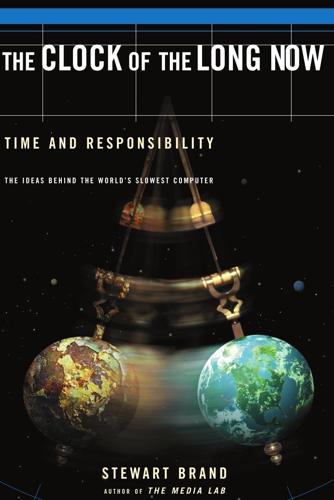
Clock of the Long Now
by
Stewart Brand
Published 1 Jan 1999
There were “Moore’s Laws” of doubling capacity in digital storage, in communications bandwidth, and in the ubiquity of microprocessors in everything from dolls and doorknobs to hearing aids. New machines became obsolete every three years. The proliferation of personal computers and the digitizing of communications via the Internet set off what came to be called Metcalfe’s Law, named after Xerox engineer Bob Metcalfe. It states that the power of a network grows as the square of the number of users (people or devices) on the net. Hence the explosion of the World Wide Web in the mid 1990s, when the Net’s total content was doubling every one hundred days. Related technologies such as biotech also took off. By 1997 Monsanto Corporation claimed that a computer-accelerated “Monsanto’s Law” was operating at a similar pace: “The ability to identify and use genetic information is doubling every twelve to twenty-four months.
…
Monsanto chose not to mention human germline engineering—that is, designing disease-resistant, higher-yield people. Velocity itself became the dominating characteristic of the world’s quicksilver economy. “We are moving from a world in which the big eat the small,” remarked Klaus Schwab, head of the World Economic Forum, “to a world in which the fast eat the slow.” FIGURE 3.2 Bob Metcalfe’s original diagram shows how the value of a net increases as the square of the number of nodes (or people) on the net. It was drawn in 1973 at Xerox PARC (a corporate research center in California) while he was working on a local-area network system called Ethernet. The diagram shows that the costs of a network system are linear, whereas the growing value of the net is exponential, and that therefore the value will surpass the costs at the “critical mass crossover” and thereafter ascend to glory.
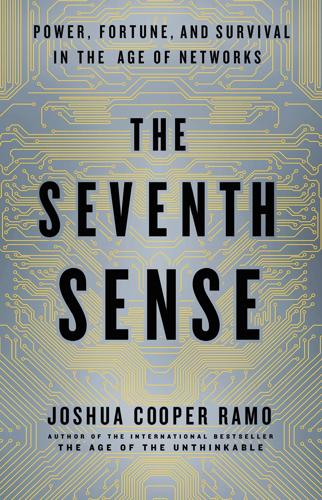
The Seventh Sense: Power, Fortune, and Survival in the Age of Networks
by
Joshua Cooper Ramo
Published 16 May 2016
A system with two phones means that there is one possible connection—we can call each other. But when you increase the number of phones by a factor of two—from five to ten, say—the number of possible connections more than doubles, from twenty-five to ninety. The difference between Bob Metcalfe and his wife sharing grocery lists and a connected, national network of husbands and wives is immense—an insight that led Bob Metcalfe and his wife to start a networking company that made them billionaires. Metcalfe’s Law has another angle, and it’s here where some of the unique Macht of network gates is revealed: It’s not merely that the power of a network grows exponentially with each additional user; it’s that the cost of being cut out grows every bit as fast.
…
In traditional economic terms this would be insane, but with network logic the strategy is clear: The more people who use TensorFlow, the smarter it gets, which in turn attracts still more users. Dense and self-learning fusions of mind and data such as TensorFlow and other soon-to-be-arriving AI systems are all gated universes. 5. The topological charm of these explosively growing clusters was first teased apart by the electrical engineer Bob Metcalfe in the 1970s. Metcalfe was hunting for a better way to send data—say, grocery lists to his wife—through Menlo Park, and he perfected a connection protocol called Ethernet, which soon became a standard for linking machines. What Metcalfe noticed as more and more users piled into the gateland of Stanford’s Ethernet-connected machines was that the reach of the system was growing exponentially.

Smart Mobs: The Next Social Revolution
by
Howard Rheingold
Published 24 Dec 2011
Without the efficiencies described by Moore’s Law, the PC, the Internet, and mobile telephones would have been impossibly large, unintelligent, and expensive. What happens when you link devices based on Moore’s Law? When ARPA wizards gathered at the Xerox Palo Alto Research Center (PARC) in the early 1970s to create the first personal computers, one of the engineering aces, Bob Metcalfe, led the team that invented the Ethernet, a high-speed network that interconnected PCs in the same building.80 Metcalfe left PARC, founded 3Com, Inc., cashed out, and came up with Metcalfe’s Law, which describes the growth of value in networks. The math is simple and is based on a fundamental mathematical property of networks: The number of potential connections between nodes grows more quickly than the number of nodes.
…
Alun Anderson, “The Mathematics of Mayhem,” in The World in 2001, <http://www.theworldin.com/arts/sci/fs1.html> (5 May 2001). 78. Gordon E. Moore, “Cramming More Components onto Integrated Circuits,” Electronics 38, 8 (19 April 1965):114117. 79. “Moore’s Law,” Intel Corporation, <http://www.intel.com/research/silicon/mooreslaw.htm > (21 December 2001). 80. Scott Kirsner, “The Legend of Bob Metcalfe,” Wired 6.11, November 1998, <http://www.wired.com/wired/archive//6.11/metcalfe.html?person=bob_met-calfe&topic_set=wiredpeople > (27 January 2002). 81. David P. Reed, “That Sneaky Exponential: Beyond Metcalfe’s Law to the Power of Community Building,” originally appeared in Context Magazine, Spring 1999 (by permission of DiamondCluster International, Inc. © 1999) <http://www.contextmag.com/archives/199903/digitalstrategyreedslaw.asp> (25 January 2002). 82.
…
See Apple Computer Maenpaa, Pasi McMaster University McNett, David Mad Wing Angels gang Madison, James Maes, Pattie Maguire, Gerald Mainframe computers Malda, Rob "Man-Machine Symbiosis" (Licklider) Manhattan Project Manila Mann, Steve and OCAP and WearComp use of the term cyborg by Marcos regime Marine biology . See also Biology Marx, Gary Mathematics Matshushita Matsunaga, Mari MCI M-commerce market Media spheres Medical research MeshNetworks Metalica Metatechnologies Metcalf, Bob Metcalfe's Law, xv and cooperation amplification and wireless networks Metricom Mexico Microprocessors,i and ad-hocracies clustering cycles and grid computing Intel, advent of and Moore's Law, xv and the search for extraterrestrial intelligence Microsoft and Bluetooth developer conferences and Linux museum .NET initiative and reputation systems Research and wireless networks Middle Ages Middleware Milinski, Manfred Military research: and ARPA and DARPA and frequency-hopping and GPS systems and smart dust Minitel Mira computer tablet Mirror Worlds concept MIT (Massachusetts Institute of Technology) Artificial Intelligence lab Auto-ID Center bioacoustics research Center for Bits and Atoms Digital Nations consortium Media Lab and reputation systems Sloan School of Management and wireless networks and wearable computing Mitchell, William J.

Move Fast and Break Things: How Facebook, Google, and Amazon Cornered Culture and Undermined Democracy
by
Jonathan Taplin
Published 17 Apr 2017
John Seely Brown, who was to become director of PARC, told me that two principles were at the center of the PARC philosophy. To begin with, Bob Taylor had brought the core directive of ARPANET with him to PARC. As Brown notes, “Decentralization was fundamental to ARPANET in the sense that a nuclear strike on a single city could not bring down the entire network.” Everything done at PARC, from the Alto to Bob Metcalf’s Ethernet architecture, was geared to making a decentralized network of personal computers function efficiently. This was new. The second core principle flowed from Alan Kay’s Dynabook. As Brown says, “The Dynabook and then the Alto were inspirations meant to empower the artistic individual.” When Brown first started working with Kay, he was playing music on the Alto and working with Stanford’s Center for Computer Research in Music and Acoustics.
…
As European competition commissioner Margrethe Vestager acknowledged last week, we live in the Google age.” So the techno-determinist philosophy has even reached into the brain of Google’s most determined regulatory opponent. This theory of self-reinforcing dominance has often been called the network effect, or Metcalfe’s law, after PARC researcher Bob Metcalfe’s formula that the value of a network is proportional to the square of the number of users. As more people use Google’s search engine, the company becomes exponentially more valuable. Could it be that Google is now what economists call a natural monopoly—a firm, such as a utility, that can supply an entire market’s demand for a service at a price lower than two firms could?

The Filter Bubble: What the Internet Is Hiding From You
by
Eli Pariser
Published 11 May 2011
Likewise, Gmail, Gchat, Google Voice, Google Docs, and a host of other products are part of an orchestrated campaign for Google lock-in. The fight between Google and Facebook hinges on which can achieve lock-in for the most users. The dynamics of lock-in are described by Metcalfe’s law, a principle coined by Bob Metcalfe, the inventor of the Ethernet protocol that wires together computers. The law says that the usefulness of a network increases at an accelerating rate as you add each new person to it. It’s not much use to be the only person you know with a fax machine, but if everyone you work with uses one, it’s a huge disadvantage not to be in the loop.
…
LinkedIn Linux Lippmann, Walter Livingston, Jessica local-maximum problem lock-in “Long Live the Web” (Berners-Lee) Loopt Lovell, Todd Lowenstein, George luck Lynch, Zack Ma, Jack MacDougald, Harry machine learning Mancini, Paul Mark, David Mayer, Marissa Mayer-Schonberger, Viktor McLarty, Mack McLuhan, Marshall McPhie, Jonathan Meadowlands meaning threats mean world syndrome MeetUp Metcalfe, Bob Metcalfe’s law Microsoft Bob Live middleman, elimination of Migra corridos Milgram, Stanley Mill, John Stuart Minority Report Moore’s law MORIS Moses, Robert mousetraps MoveOn Mulvenon, James MySpace Nabokov, Vladimir National Rifle Association (NRA) National Security Agency (NSA) Nauman, Arthur Ne’eman, Yuval Negroponte, Nicholas Nemeth, Charlan Netflix Netflix Challenge Newmark, Craig news Facebook feeds Google News people-powered Yahoo News newspapers editorial ethics and ombudsmen and New York Times 9/11 Nordhaus, Ted Norvig, Peter Nosenko, Yuri Obama, Barack Oceana “Of Sirens and Amish Children” (Benkler) OkCupid Olson, Carrie Oswald, Lee Harvey overfitting Pabst Page, Larry PageRank Palmer, Chris Palo Alto Research Center (PARC) Pandora PanelDirector Pareles, Jon Parker, Sean Pattern Language, A (Alexander et al.)
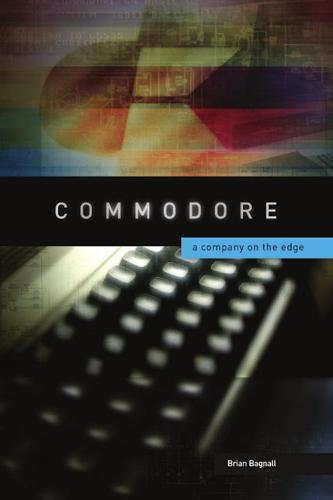
Commodore: A Company on the Edge
by
Brian Bagnall
Published 13 Sep 2005
“It pretty much had the PET expansion bus on the back but we knew we couldn’t put the IEEE-488 on it,” says Seiler. Chuck Peddle hired a former Xerox PARC engineer named Robert Metcalfe to help his engineers figure out the port. “He organized the meetings at Moorpark with Metcalfe because we were trying to design an expansion bus,” says Seiler. “We knew we couldn’t put the expensive HP IEEE bus in it so we tried to come up with something cheaper.” “That summer in San Jose, Robert Metcalfe was a consultant who worked for Commodore before he founded 3Com,” says Feagans. “He was hired as a consultant to look at networking.” Metcalfe pitched an idea he was currently working on.
…
“Jack flew me and my wife to Las Vegas for Comdex, and also our honeymoon, on the loaner PET Jet after the belly landing in Iowa,” says Feagans. “That was my first meeting with Jim Finke.” At the newly reopened Moorpark offices, where the disk drive designers now resided, Feagans continued working on the concepts introduced to him by Robert Metcalfe, including networking and graphical user interfaces. The others began work on a data storage device using VCR tape. Robert Russell, the young engineer hired in 1979, entered Tramiel’s inner family after his heroic efforts making the VIC-20 a reality. Russell worked out of an office at 3330 Scott Boulevard, in the same building as Tramiel.
…
Unfortunately, it seemed to set the pattern for computer design in later years. * * * John Feagans continued working at the Moorpark R&D office after the C64 debut at CES. “I developed the music player for the launch of the C64 there and stayed to develop the Commodore network for the C64 and PET,” he says. Inspired by Robert Metcalfe’s visit in 1980, Feagans created a computer network. His network required a master computer, which served up to 10 slaves. “I created a plug-in for the expansion port on the PET and also the C64 which brought out the serial port from the 6522 to an RS-422 interface,” says Feagans. “The ‘teacher’s PET’ was the master and the C64s were the slaves.

The Innovators: How a Group of Inventors, Hackers, Geniuses and Geeks Created the Digital Revolution
by
Walter Isaacson
Published 6 Oct 2014
Engelbart stages the Mother of All Demos with Brand’s help. 1969 First nodes of ARPANET installed. 1971 Don Hoefler begins column for Electronic News called “Silicon Valley USA.” Demise party for Whole Earth Catalog. Intel 4004 microprocessor unveiled. Ray Tomlinson invents email. 1972 Nolan Bushnell creates Pong at Atari with Al Alcorn. 1973 1973 Alan Kay helps to create the Alto at Xerox PARC. Ethernet developed by Bob Metcalfe at Xerox PARC. Community Memory shared terminal set up at Leopold’s Records, Berkeley. Vint Cerf and Bob Kahn complete TCP/IP protocols for the Internet. 1974 Intel 8080 comes out. 1975 Altair personal computer from MITS appears. Paul Allen and Bill Gates write BASIC for Altair, form Microsoft.
…
Within a few years, there were other packet-switched networks that were similar but not interconnected. For example, engineers at Xerox’s Palo Alto Research Center (PARC) wanted a local-area network to connect the office workstations they were designing in the early 1970s, and a recent Harvard PhD there named Bob Metcalfe created a way to use coaxial cable (the type that plugs into cable TV boxes) to create a high-bandwidth system that he named “Ethernet.” It was modeled on a wireless network developed in Hawaii known as ALOHAnet, which sent packet data through UHF and satellite signals. In addition, there was a packet radio network in San Francisco, known as PRNET, and also a satellite version called SATNET.
…
he kept shouting—and finally was given, at the behest of Xerox’s top management, a fuller show. Jobs bounced around the room as his engineers studied each pixel on the screen. “You’re sitting on a goldmine,” he shouted. “I can’t believe Xerox is not taking advantage of this.” There were three major innovations on display. The first was Ethernet, the technologies developed by Bob Metcalfe for creating local area networks. Like Gates and other pioneers of personal computers, Jobs was not very interested—certainly not as interested as he should have been—in networking technology. He was focused on the ability of computers to empower individuals rather than to facilitate collaboration.

Randomistas: How Radical Researchers Changed Our World
by
Andrew Leigh
Published 14 Sep 2018
Harlam, Jacques César & David Trounce, ‘Quantifying and improving promotion effectiveness at CVS’, Marketing Science, vol. 26, no. 4, 2007, pp. 566–75. 36Ju-Young Kim, Martin Natter & Martni Spann, ‘Pay what you want: A new participative pricing mechanism’, Journal of Marketing, vol. 73, 2009, pp. 44–58. 37Greer K. Gosnell, John A. List & Robert Metcalfe, ‘A new approach to an age-old problem: Solving externalities by incenting workers directly’, NBER Working Paper No. 22316, Cambridge, MA: NBER, 2016. 38Bruce S. Shearer, ‘Piece rates, fixed wages and incentives: Evidence from a field experiment’, Review of Economic Studies, vol. 71, no. 2, 2004, pp. 513–34. 39Lan Shi, ‘Incentive effect of piece-rate contracts: Evidence from two small field experiments’, B.E.
…
See Laura and John Arnold Foundation, ‘Laura and John Arnold Foundation announces expanded funding for low-cost randomized controlled trials to drive effective social spending’, press release, 7 December 2015. 9David Halpern, Inside the Nudge Unit: How Small Changes Can Make a Big Difference, London: WH Allen, 2015, p. 274. 10Halpern, Inside the Nudge Unit, p. 274. 11Halpern, Inside the Nudge Unit, pp. 91–2. 12Halpern, Inside the Nudge Unit, p. 89. 13Halpern, Inside the Nudge Unit, pp. 113–15; Michael Hallsworth, John List, Robert Metcalfe & Ivo Vlaev, ‘The behavioralist as tax collector: Using natural field experiments to enhance tax compliance’, Journal of Public Economics, vol. 148, issue C, 2017, pp. 14–31. The Australian Taxation Office reports that it increased compliance from tax debtors by 5 per cent simply by removing from its letters the opening words: ‘Please disregard this letter if you have paid this debt in full in the last seven days’: Peter Martin, ‘Mind games could pay handsomely’, Sydney Morning Herald, 17 November 2013. 14Halpern, Inside the Nudge Unit, p. 90. 15Tim Harford, ‘Nudge, nudge.
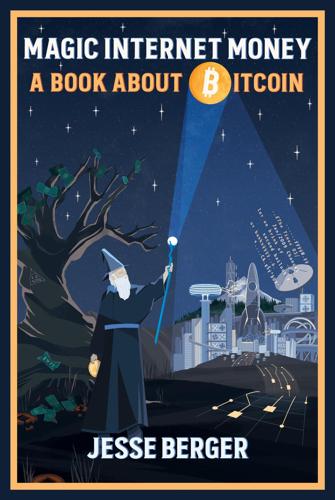
Magic Internet Money: A Book About Bitcoin
by
Jesse Berger
Published 14 Sep 2020
Chapter 5: Innovation 10Vildana Haijric, “Bitcoin’s 9,000,000% Rise this Decade Leaves the Skeptics Aghast” Bloomberg: Cryptocurrencies online (December 31, 2019). 11“Bitcoin’s Security Model: A Deep Dive” CoinDesk online (November 13, 2016; updated February 22, 2019). Chapter 6: Resilience 12Accredited to Robert Metcalfe in regard to Ethernet, Metcalfe’s law was presented in 1980. George Gilder expressed it in this form in 1993. Chapter 7: Scarcity 13Andrew Glester, “The Asteroid Trillionaires” physicsworld (June 11, 2018). 14Nassim Nicholas Taleb, Antifragile: Things that Gain from Disorder (Random House, 2012).

Platform Revolution: How Networked Markets Are Transforming the Economy--And How to Make Them Work for You
by
Sangeet Paul Choudary
,
Marshall W. van Alstyne
and
Geoffrey G. Parker
Published 27 Mar 2016
This is not to say that supply economies of scale no longer matter; of course they do. But demand economies of scale, in the form of network effects, have become the most important differentiating factor. Metcalfe’s law is a useful way of encapsulating how network effects create value for those who participate in a network as well as for those who own or manage the network. Robert Metcalfe, co-inventor of Ethernet and founder of 3Com, pointed out that the value of a telephone network grows nonlinearly as the number of subscribers to the network increases, making more connections among subscribers possible. When there’s only one node in a network, no connections are possible. An MIT professor we know likes to joke that the prize for “greatest salesperson in history” should go to whoever sold the first telephone.
…
The accuracy of the search algorithm and the intuitiveness of the navigation tools offered to users as they seek other users with whom they can engage in value-creating interactions. Matching quality is critical to delivering value and stimulating the long-term growth and success of a platform. It is achieved through excellence in product or service curation. Metcalfe’s law. A principle formulated by Robert Metcalfe which states that the value of a network grows nonlinearly as the number of users of the network increases, making more connections among users possible (a type of growth also known as convex growth). Specifically, Metcalfe’s law posits that the value of a network with n connected users is proportional to the square of the number of users (n2).

As the Future Catches You: How Genomics & Other Forces Are Changing Your Work, Health & Wealth
by
Juan Enriquez
Published 15 Feb 2001
A lot of people have written on this phenomenon of a new economy; one of my favorites is Wired editor Kevin Kelly. Many of the ideas in this chapter come from his book New Rules for the New Economy (New York: Viking, 1998). Peter F. Drucker has also been detailing these changes for decades, starting with The End of the Economic Man (1939). See also his Post-Capitalist Society (1993). 8. Robert Metcalf, founder of 3Com, argues the value of a network is proportional to the square of the number of people in it. 9. Attempting to regulate these decentralized networks is certain to give bureaucrats ulcers— or worse. See, for example, Peter Maas, “Silicorn Valley,” Wired, September 1997: 131–38. 10.
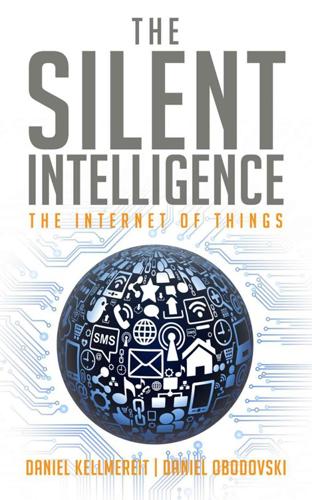
The Silent Intelligence: The Internet of Things
by
Daniel Kellmereit
and
Daniel Obodovski
Published 19 Sep 2013
It took a long time to build 3G networks, ensure their stability, and create an ecosystem of applications, but once Apple introduced the first iPhone in 2007 and Android followed shortly after, smartphones took over the market within three years. We believe something very similar is about to happen in the M2M space. A big part of technology adoption is awareness. As Peggy Smedley says: It’s all of these great minds that helped us understand what the technology can do for us, people like Robert Metcalfe or Steve Jobs and other great visionaries. They helped us really understand what the technologies can do, what the data behind the technologies can do. We have to look back before we can look forward. We will talk more about the M2M technology ecosystem and its challenges in chapter 2; for now, let’s look at the history of M2M or the Internet of Things.

More Everything Forever: AI Overlords, Space Empires, and Silicon Valley's Crusade to Control the Fate of Humanity
by
Adam Becker
Published 14 Jun 2025
Andreessen and Eric Bina, a programmer at the National Center for Supercomputing Applications at UIUC, incorporated this feature into a new Web browser they’d been working on, called Mosaic.3 Andreessen and Bina’s innovation launched the modern Web. Up until that point, a few people thought that the Web might be better than contemporary, now-archaic internet protocols like Gopher, wrote the engineer Robert Metcalfe, but upon the launch of Mosaic, “several million then suddenly noticed that the Web might be better than sex.”4 The next year, Andreessen and his business partners started a new company, later dubbed Netscape. Netscape Navigator, the new Web browser created at that company, became explosively popular.
…
CHAPTER 5 1 Marc Andreessen, “The Techno-Optimist Manifesto,” Andreessen Horowitz, October 16, 2023, https://a16z.com/the-techno-optimist-manifesto/. 2 “A Short History of the Web,” CERN, accessed June 13, 2024, https://home.cern/science/computing/birth-web/short-history-web. 3 Jay Hoffman, “The Origin of the IMG Tag,” History of the Web, March 7, 2017, https://thehistoryoftheweb.com/the-origin-of-the-img-tag/. 4 Robert Metcalfe, “Microsoft and Netscape Open Some New Fronts in Escalating Web Wars,” InfoWorld, August 21, 1995, p. 35, https://archive.org/details/bub_gb_0joEAAAAMBAJ/page/n42/mode/1up. 5 Andreessen, “Manifesto.” 6 Ibid. (emphasis his). 7 Emily Baker-White, “Who Is @BasedBeffJezos, the Leader of the Tech Elite’s ‘E/acc’ Movement?

Palo Alto: A History of California, Capitalism, and the World
by
Malcolm Harris
Published 14 Feb 2023
Computer retailers were eager to put a new IBM in their windows, but they wanted customers to be able to bring their computers in for repairs and modifications without IBM’s oversight. The solution was for Big Blue to start thinking like a hacker: Instead of building its PC from the ground up, it assembled off-the-shelf parts bought from contractors. Intel’s new 8088 processor was the brain; Zenith made an iconic green monitor; Epson made a printer; Bob Metcalfe’s PARC networking spin-off, 3Com, contributed the Ethernet board.15 That was one configuration, but there were plenty more, depending on what you wanted the computer to do and how much money you wanted to spend. By assembling contracted parts, IBM incorporated start-up geniuses who got pushed out the door at Xerox.
…
Chapter 4.4 Americas Online San Jose Sharks—The Tiger Woods Economy—Cocaine and Cappuccinos—Web Yahoos—Broken Windows—Pets.com Now that the gamers, hackers, and small-business owners had shrunk computer power down to personal size, they had to reconnect. Single-player games and sole proprietorships gave Apple a customer base, and Steve Jobs famously left the Ethernet connectivity port behind at Xerox PARC. Bob Metcalfe encouraged Xerox to license the board cheaply. The inventor got in line himself and started looking up venture capitalists. Ethernet boards were expensive, and bootstrapping wasn’t feasible, but the venture capital industry was coming together after the Fairchildren and Atari wins as well as some helpful deregulation in the financial sector.
…
It was all fine and good to issue press releases about how the web was going to improve life for everyone, but you weren’t supposed to actually spend billions of dollars investing in that image. “Move fast and build things” wasn’t going to cut it; what Silicon Valley needed was a reversion to Reagan. Footnotes i One of Bob Metcalfe’s most famous achievements was convincing Xerox to send him to Hawaii for three months to study ALOHAnet to begin his employment at PARC. ii For a summary of these networks and their development, see Katie Hafner and Matthew Lyon, Where Wizards Stay Up Late: The Origins of the Internet (Simon & Schuster, 1996), 219–46.

The Quest: Energy, Security, and the Remaking of the Modern World
by
Daniel Yergin
Published 14 May 2011
The entry of venture capital into cleantech has gone from the trickle to the veritable flood. Investment in the U.S. cleantech industry went from $286 million in 2001 to $3.7 billion in 2010—a rise of more than ten times. In 2010 cleantech represented 17 percent of total VC investment in the United States.16 “MIT IS DOING ENERGY” Robert Metcalfe is one the legends of the information technology business. He invented the Ethernet, which makes possible the LANs—local area networks—that link computers in offices and homes. He was also on the board of the company that developed PowerPoint, the inescapable tool of most presentations. He has been awarded the U.S.
…
Vinod Khosla, a prominent cleantech venture capitalist has said that venture capital will do to energy what it did to the old IBM-dominated computer industry and the old AT&T-dominated phone business: undermine the established companies, redefine the business model, and spawn a host of major new competitors. (To be sure, the U.S. Justice Department helped that “undermining” with its far-reaching antitrust cases against both companies.) Others have a different perspective. Robert Metcalfe sees the possibility of a green tech and global-warming bubble that will end with a crash. But from a big-picture perspective, that will accelerate the development of new technologies. “Bubbles accelerate innovation,” said Metcalfe. And one spin-off from innovation is “surprises.”17 Actual experience has been mixed.
…
Ante, Creative Capital: Georges Doriot and the Birth of Venture Capital (Boston: Harvard Business Press, 2008), pp. 80–88, 198. 11 Interview with Samuel Bodman; Ante, Creative Capital, pp. 109, 126 (“peaceful life”), 198; Charter of the Massachusetts Institute of Technology, at http://libraries.mit.edu/archives/mithistory/charter.html. 12 David Packard, The HP Way (New York: Collins Business Essentials, 1995), p. 22. 13 Tom Perkins, Valley Boy: The Education of Tom Perkins (New York: Gotham Books, 2007); interview with Ray Lane. 14 Interview with Nancy Floyd. 15 Interview with Ira Ehrenpreis. 16 Interview with Ray Lane; Kleiner Perkins, “MoneyTree Report,” PricewaterhouseCoopers, January 21, 2011, at https://www.pwcmoneytree.com/MTPublic/ns/moneytree/filesource/exhibits/10Q4MTRelease_FINAL.pdf. 17 Interview with Robert Metcalfe; Susan Hockfield, Inaugural Address, Massachusetts Institute of Technology, May 6, 2005, at http://web.mit.edu/hockfield/speeches/2005-inaugural-address.html. 18 Steven Koonin, “From Energy Innovation to Energy Transformation,” p. 6 (“decades”); interviews with Ray Lane and Ernest Moniz. 19 Steven Chu, speech, CERAWeek, March 9, 2010; interview with Matt Rogers; U.S.

The Rise of the Network Society
by
Manuel Castells
Published 31 Aug 1996
In the summer of 1973, Vinton Cerf and Robert Kahn, computer scientists doing research at ARPA, designed the basic architecture of the Internet, building on work toward a communication protocol conducted by Kahn at his research firm, BBN. They called a meeting at Stanford, attended by researchers from ARPA and various universities and research centers, including PARC/Xerox, where Robert Metcalfe was working on packet-communication technology that would lead to the creation of local area networks (LANs). Technological cooperation also included various groups in Europe, particularly the French researchers associated with the Cyclades program. Working on the basis of this Stanford seminar, Cerf, Metcalfe, and Gerard Lelann (from Cyclades) specified a transmission control protocol that would accommodate the requests of different researchers, and of different existing networks.
…
Behind the development of the Internet there was the scientific, institutional, and personal networks cutting across the Defense Department, National Science Foundation, major research universities (particularly MIT, UCLA, Stanford, University of Southern California, Harvard, University of California at Santa Barbara, and University of California at Berkeley), and specialized technological think-tanks, such as MIT’s Lincoln Laboratory, SRI (formerly Stanford Research Institute), Palo Alto Research Corporation (funded by Xerox), ATT’s Bell Laboratories, Rand Corporation, and BBN (Bolt, Beranek & Newman). Key technological players in the 1960s–1970s were, among others, J. C. R. Licklider, Paul Baran, Douglas Engelbart (the inventor of the mouse), Robert Taylor, Ivan Sutherland, Lawrence Roberts, Alex McKenzie, Robert Kahn, Alan Kay, Robert Thomas, Robert Metcalfe, and a brilliant computer science theoretician Leonard Kleinrock, and his cohort of outstanding graduate students at UCLA, who would become some of the key minds behind the design and development of the Internet: Vinton Cerf, Stephen Crocker, Jon Postel, among others. Many of these computer scientists moved back and forth between these various institutions, creating a networked milieu of innovation whose dynamics and goals became largely autonomous from the specific purposes of military strategy or supercomputing linkups.
…
Moreover, when networks diffuse, their growth becomes exponential, as the benefits of being in the network grow exponentially, because of the greater number of connections, and the cost grows in a linear pattern. Besides, the penalty for being outside the network increases with the network’s growth because of the declining number of opportunities in reaching other elements outside the network. The creator of local area networks technology, Robert Metcalfe, proposed in 1973 a simple mathematical formula showing how the value of a network increases as the square of the number of nodes in the net. The formula is V = n(n – 1) where n is the number of nodes in the network. Fourthly, related to networking but a clearly distinct feature, the information technology paradigm is based on flexibility.

The Secret War Between Downloading and Uploading: Tales of the Computer as Culture Machine
by
Peter Lunenfeld
Published 31 Mar 2011
Jane Jacobs is inspirational in terms of reminding us that deep systemic analysis can be linked to action.7 Metcalfe’s Corollary These infrastructure battles become more and more important because as complex systems evolve over time, what gets constructed now, no matter how ad hoc, tends to be grandfathered in as time goes by. Bob Metcalfe—coinventor of the Ethernet technology, founder of industrial giant 3COM, and a pioneer in wiring people together—put forth one of the most succinct analyses of networks ever offered: the value of 86 WEB n.0 a network is proportional to the square of the number of users of the system (n2). Networks become more powerful and valuable as more users join them.
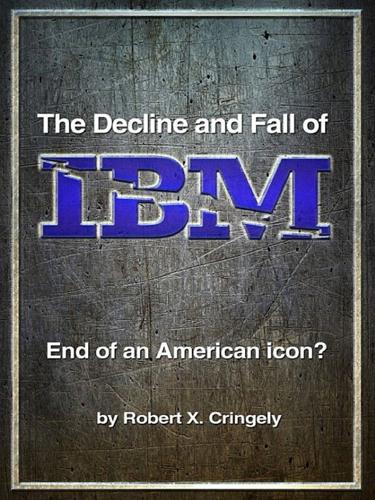
The Decline and Fall of IBM: End of an American Icon?
by
Robert X. Cringely
Published 1 Jun 2014
IBM eventually responded to Ethernet with its own technology called Token Ring, but, in typical IBM fashion, it was lower in performance and higher in price. Token Ring was rated at four megabits-per-second to Ethernet’s 10 megabits. IBM touted the greater efficiency of its deterministic Token Ring algorithm, but all Ethernet inventor Bob Metcalfe had to do was recite over and over again: “Ten is bigger than four.” And though Token Ring was eventually souped-up to sixteen megabits, by that time Ethernet was going one hundred megabits—now a gigabit or more—and had already won the day. Corporate America was moving to networks in a big way and IBM was losing most of that business.

The Flat White Economy
by
Douglas McWilliams
Published 15 Feb 2015
And as the value of each phone increases, the more phones tend to become available to contact on the network, until there are so many other connections that the value of an additional connection is negligible. Network effects were first developed as a concept by the President of Bell Telephones in making his case for a monopoly in 1908, but the ideas were developed and refined in the 1980s and 1990s. Robert Metcalfe, one of the co-inventors of the Ethernet, was the progenitor of Metcalfe’s Law – that the value of a communications network varied with the square of the number of connections in the network. This idea was vigorously promoted by the economic guru George Gilder2 during the 1990s. Where there are network effects, investment typically doesn’t take place until there is a critical mass of potential users.
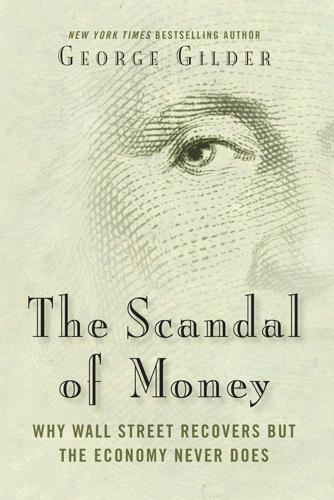
The Scandal of Money
by
George Gilder
Published 23 Feb 2016
It now chiefly relies on other vectors of innovation, such as parallel processing, multi-threading, lower voltages, and three-dimensional chip architectures. Moore’s Law has become an important principle of INFORMATION THEORY. Metcalfe’s Law: The value and power of a network grows by the square of the number of compatible nodes it links. Named for the engineer Robert Metcalfe, a co-inventor of Ethernet, this law is a rough index and deeply counterintuitive. (It would be preposterous to claim that the Internet is worth the square of its six billion connected devices.) But the law applies to smaller networks, and it explains the vectors of value creation of companies such as Facebook, Apple, Google, and Amazon, which now dominate stock market capitalization.

Memory Machines: The Evolution of Hypertext
by
Belinda Barnet
Published 14 Jul 2013
Although Nelson seems to figure in every major history of computing and multimedia (for example Segaller 1998; Wardrip-Fruin and Montfort 2003; Ceruzzi 1998; Rheingold 2000; Abbate 1999; Shurkin 1996 and Bardini 2000) as the man who dreamed up hypertext, he is not a known quantity outside of the digerati. The people he appears beside in such histories – Doug Engelbart, Bob Metcalfe, Tim Berners-Lee – have attained worldwide recognition (and in the case of Metcalfe, wealth) and have directly influenced the course of computing with their systems. Nelson’s influence on computing history is undeniable, but harder to touch; all we have of Xanadu is a tantalizing design, its ideals and its ideas.
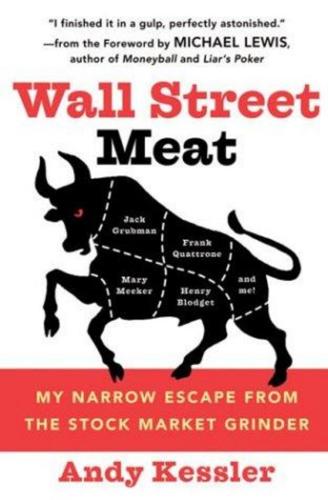
Wall Street Meat
by
Andy Kessler
Published 17 Mar 2003
Whatever the revenue numbers or margin numbers or earnings forecasts companies reported, their stocks went down. The ducks were quacking in the opposite direction. Momos started dumping. Until the fall, it wasn’t 213 Wall Street Meat obvious that it was all over and many investors kept looking for signs that things might turn back up, or that there might be a bottom in these stocks. Bob Metcalfe, the inventor of Ethernet networking and a networking industry legend, ran a conference called Vortex, and he asked me to be on a financial panel that he was moderating. In May 2000, I caught a flight to John Wayne Airport in Southern California and then cabbed it to the Ritz Carlton at Laguna Niguel.

Age of Context: Mobile, Sensors, Data and the Future of Privacy
by
Robert Scoble
and
Shel Israel
Published 4 Sep 2013
How far is this more-powerful-cheaper-smaller trend going? To the vanishing point, it seems. Some believe that will happen in about ten years. We are among those who disagree because of the important emergent trend, nanotechnology, which envisions microprocessors being reduced to a single cell. Metcalfe’s Law. Ethernet inventor Robert Metcalfe set forth the theory that the value of the telecommunications network is proportional to the square of the number of connected system nodes. He made his observations back when networks consisted of desktop computers, printers, fax machines and phones. But the law holds true today as billions of nodes are connected via Wifi and are growing rapidly toward the trillions.

The Code: Silicon Valley and the Remaking of America
by
Margaret O'Mara
Published 8 Jul 2019
Engelbart’s SRI operation had drifted after the great demo—investors couldn’t figure out the devices’ commercial potential—and several members of his team moved over to PARC. Still more came from the academic engineering diaspora of Stanford and Berkeley. There was Alan Kay, who wanted to develop a computer small enough to fit in a book bag. Down the hall, Bob Metcalfe and David Boggs invented a way to connect multiple computers that they called the Ethernet. Across the way were Adele Goldberg and Dan Ingalls, also computer-education evangelists, who collaborated with Kay on a transformative and classroom-friendly new computer language called Smalltalk. Conway, who’d already made major breakthroughs in high-performance computer architecture in an earlier career at IBM, was recruited from Memorex.
…
John Heilemann, Pride Before the Fall: The Trials of Bill Gates and the End of the Microsoft Era (New York: CollinsBusiness, 2001), 58, 91. 5. Karen Southwick, High Noon: The Inside Story of Scott McNealy and the Rise of Sun Microsystems (New York: Wiley, 1999), 45, 48. 6. Bill Gates, The Road Ahead (New York: Random House, 1995), x. Andreessen later said he was requoting 3Com’s Bob Metcalfe when he made that famous Windows slam; see Chris Anderson, “The Man Who Makes the Future,” Wired, April 24, 2014, https://www.wired.com/2012/04/ff-andreessen/, archived at https://perma.cc/6D5K-XGWJ. 7. Gates, Memorandum, “The Internet Tidal Wave,” May 26, 1995, Exhibit 20, United States v.
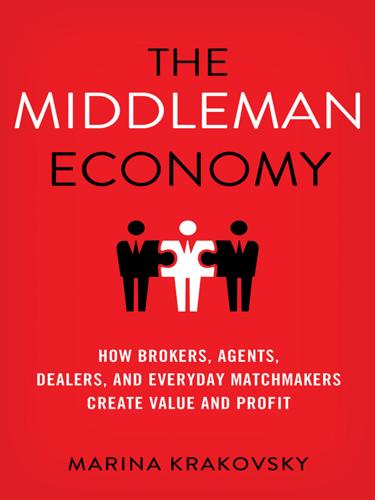
The Middleman Economy: How Brokers, Agents, Dealers, and Everyday Matchmakers Create Value and Profit
by
Marina Krakovsky
Published 14 Sep 2015
For example, when users can simultaneously be on two or more platforms (multihoming), a single platform need not prevail—so while SitterCity may have reached a tipping point, the matchmaking between parents and babysitters hasn’t tipped toward any one platform. 43.This statement is a corollary of the so-called Metcalfe’s Law, which postulates that the value of a network is proportional to the square of the number of users of the network. We shouldn’t take this formula literally, and Bob Metcalfe himself has said that his point was to show a crossover point of cost and value, the critical mass of users before which a network doesn’t pay, rather than to tout the wondrous value of a large network. Regardless of the exact relationship, the basic idea that the value of a network grows at a faster rate than its size is well accepted.
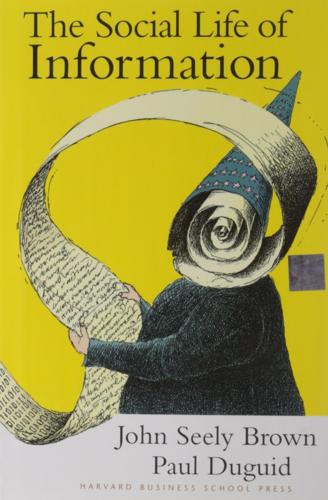
Social Life of Information
by
John Seely Brown
and
Paul Duguid
Published 2 Feb 2000
And in the late 1970s, the personal computer, the Ethernet and local networks, and word-processing software were all under development in service of that faith. Yet even within PARC, none of these tools, startlingly innovative though each was, was quite the "killer" it was expected to be. That came with another PARC invention, one that transformed all these inventions into the indispensable office tools we know them to be today. Bob Metcalfe, one of the Ethernet's designers, got a clear sighting of the critical addition early on. Page 177 Metcalfe would regularly take down the Ethernet links connecting researchers' workstations to one another so that he could work on the system. The traffic along the network was so light that no one bothered about the irregular downtime.

The Internet Is Not the Answer
by
Andrew Keen
Published 5 Jan 2015
The IPO realized a payout of $765 million for Kleiner Perkins, which was more than double the value of the entire fund from which the original investment came.18 Clark’s investment of $3 million came to be worth $633 million—which explains why the incorrigibly self-aggrandizing entrepreneur put the identifying number 633MN on the tail of an executive jet he bought with some of his proceeds from the IPO.19 And the just turned twenty-four-year-old Marc Andreessen, who two years earlier had been making $6.85 an hour as a NCSA programmer, was suddenly worth $58 million, thus becoming the first in a long line of boy tycoons minted by the Internet.20 “What happened to Netscape Communications was without parallel,” notes David Kaplan, “and came to define modern Silicon Valley.”21 Netscape’s success drove the first great commercial expansion of the Internet. The number of Internet users grew from 16 million in 1995 to 361 million in 2000. This growth confirmed Metcalfe’s law—Ethernet inventor Bob Metcalfe’s eponymous rule that each new person who joins a network increases the power of that network exponentially. It triggered the dot-com boom, a half decade of irrational exuberance that created Amazon, Yahoo, eBay, and thousands of failed Internet startups, including my own, an online music website backed by Intel and SAP called AudioCafe.
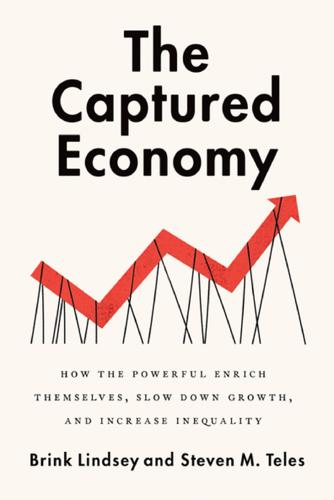
The Captured Economy: How the Powerful Enrich Themselves, Slow Down Growth, and Increase Inequality
by
Brink Lindsey
Published 12 Oct 2017
Kleiner, “Reforming Occupational Licensing Policies,” Brookings Institution, Hamilton Project Discussion Paper 2015-01, January 2015, http://www.brookings.edu/~/media/research/files/papers/2015/01/28%20reforming%20occupational%20licensing%20kleiner/reform_occupational_licensing_policies_kleiner_v4.pdf. 17.Kleiner, Licensing Occupations, p. 115. 18.Andrew Bender, “Uber’s Astounding Rise: Overtaking Taxis in Key Markets,” Forbes, April 10, 2015, http://www.forbes.com/sites/andrewbender/2015/04/10/ubers-astounding-rise-overtaking-taxis-in-key-markets/#4d6699a922ef. 19.Peter Cohen, Robert Hahn, Jonathan Hall, Steven Levitt, and Robert Metcalfe, “Using Big Data to Estimate Consumer Surplus: The Case of Uber,” National Bureau of Economic Research Working Paper No. 22627, September 2016, http://www.nber.org/papers/w22627. 20.Scott Wallstein, “Has Uber Forced Taxi Drivers to Up Their Game?” Atlantic, July 9, 2015, http://www.theatlantic.com/business/archive/2015/07/uber-taxi-drivers-complaints-chicago-newyork/397931/. 21.Kleiner, “Reforming Occupational Licensing Policies.” 22.Kleiner and Krueger, “Analyzing the Extent and Influence of Occupational Licensing.” 23.Angrist and Guryan, “Teacher Testing, Teacher Education, and Teacher Characteristics.” 24.Maya N.
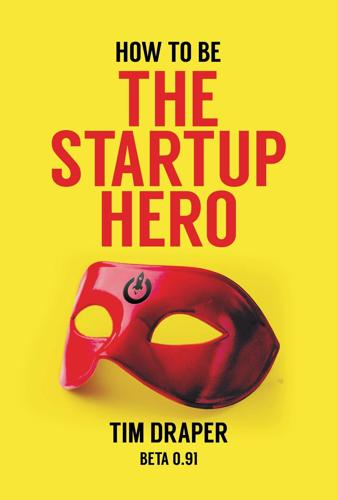
How to Be the Startup Hero: A Guide and Textbook for Entrepreneurs and Aspiring Entrepreneurs
by
Tim Draper
Published 18 Dec 2017
Companies in the network include Right-Click Capital in Australia, Dalus Capital in Mexico, Wavemaker in Singapore and South East Asia, Blume Ventures in India, as well as the various Draper branded funds: Draper Dragon in China, Draper Athena in Korea, Draper Nexus in Japan, Draper Esprit in the UK, Draper Triangle in the Midwestern US, Draper Aurora in Russia, and Draper Associates in Silicon Valley as well as three smaller firms in our DVN beta program, and we are adding more partners every year. A network provides network effects. More nodes on a network increase the power of the network as the square of the number of nodes on the network increases. This concept is known as Metcalfe’s Law, after entrepreneur, venture capitalist, educator and pundit Bob Metcalfe. The DVN allows me to evaluate and potentially fund any company from anywhere in the world. My deal flow has also expanded and improved. My judgment can only have been improved by seeing more companies from more regions, and Draper Associates’ returns should continue to improve because we see so many more companies for each one I invest in.
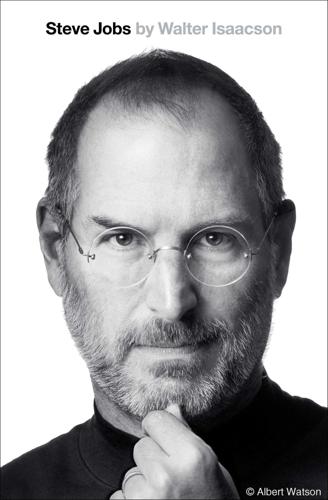
Steve Jobs
by
Walter Isaacson
Published 23 Oct 2011
SOURCES Interviews (conducted 2009–2011) Al Alcorn, Roger Ames, Fred Anderson, Bill Atkinson, Joan Baez, Marjorie Powell Barden, Jeff Bewkes, Bono, Ann Bowers, Stewart Brand, Chrisann Brennan, Larry Brilliant, John Seeley Brown, Tim Brown, Nolan Bushnell, Greg Calhoun, Bill Campbell, Berry Cash, Ed Catmull, Ray Cave, Lee Clow, Debi Coleman, Tim Cook, Katie Cotton, Eddy Cue, Andrea Cunningham, John Doerr, Millard Drexler, Jennifer Egan, Al Eisenstat, Michael Eisner, Larry Ellison, Philip Elmer-DeWitt, Gerard Errera, Tony Fadell, Jean-Louis Gassée, Bill Gates, Adele Goldberg, Craig Good, Austan Goolsbee, Al Gore, Andy Grove, Bill Hambrecht, Michael Hawley, Andy Hertzfeld, Joanna Hoffman, Elizabeth Holmes, Bruce Horn, John Huey, Jimmy Iovine, Jony Ive, Oren Jacob, Erin Jobs, Reed Jobs, Steve Jobs, Ron Johnson, Mitch Kapor, Susan Kare (email), Jeffrey Katzenberg, Pam Kerwin, Kristina Kiehl, Joel Klein, Daniel Kottke, Andy Lack, John Lasseter, Art Levinson, Steven Levy, Dan’l Lewin, Maya Lin, Yo-Yo Ma, Mike Markkula, John Markoff, Wynton Marsalis, Regis McKenna, Mike Merin, Bob Metcalfe, Doug Morris, Walt Mossberg, Rupert Murdoch, Mike Murray, Nicholas Negroponte, Dean Ornish, Paul Otellini, Norman Pearlstine, Laurene Powell, Josh Quittner, Tina Redse, George Riley, Brian Roberts, Arthur Rock, Jeff Rosen, Alain Rossmann, Jon Rubinstein, Phil Schiller, Eric Schmidt, Barry Schuler, Mike Scott, John Sculley, Andy Serwer, Mona Simpson, Mike Slade, Alvy Ray Smith, Gina Smith, Kathryn Smith, Rick Stengel, Larry Tesler, Avie Tevanian, Guy “Bud” Tribble, Don Valentine, Paul Vidich, James Vincent, Alice Waters, Ron Wayne, Wendell Weeks, Ed Woolard, Stephen Wozniak, Del Yocam, Jerry York.
…
Seven Days in May: Interviews with Jean-Louis Gassée, Steve Jobs, Bill Campbell, Al Eisenstat, John Sculley, Mike Murray, Mike Markkula, Debi Coleman. Bro Uttal, “Behind the Fall of Steve Jobs,” Fortune, Aug. 5, 1985; Sculley, 249–260; Rose, 275–290; Young, 396–404. Like a Rolling Stone: Interviews with Mike Murray, Mike Markkula, Steve Jobs, John Sculley, Bob Metcalfe, George Riley, Andy Hertzfeld, Tina Redse, Mike Merin, Al Eisenstat, Arthur Rock. Tina Redse email to Steve Jobs, July 20, 2010; “No Job for Jobs,” AP, July 26, 1985; “Jobs Talks about His Rise and Fall,” Newsweek, Sept. 30, 1985; Hertzfeld, 269–271; Young, 387, 403–405; Young and Simon, 116; Rose, 288–292; Sculley, 242–245, 286–287; letter from Al Eisenstat to Arthur Hartman, July 23, 1985 (courtesy of Al Eisenstat).

This Is for Everyone: The Captivating Memoir From the Inventor of the World Wide Web
by
Tim Berners-Lee
Published 8 Sep 2025
My ambassador was Karen Sollins, a researcher at the school’s famous Laboratory for Computer Science. There, I gave one of my first lectures on the web and was met with a warm reception. I also made sure people at the lab were using the web, sometimes even installing the Viola browser on MIT machines myself. Xerox PARC, in Silicon Valley, was equally impressive. This is where Bob Metcalf had invented the ethernet standard, and where the modern computing paradigm of having a big screen, a mouse and a network connection were first demonstrated with the Xerox Alto personal computer. (Steve Jobs had been inspired to build the Apple Macintosh after seeing a demonstration of the Alto.)
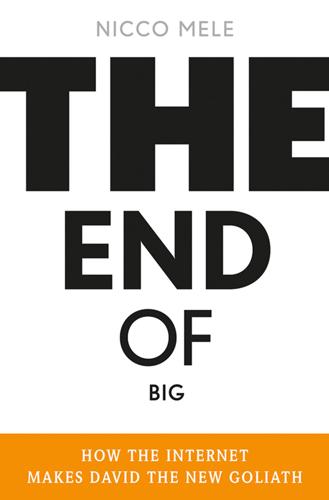
The End of Big: How the Internet Makes David the New Goliath
by
Nicco Mele
Published 14 Apr 2013
For years, AT&T’s communication monopoly stymied the creativity of computer scientists and innovators, reaffirming in their minds the great distrust of large institutions that had taken root during the late 1960s. The man widely credited with inventing Ethernet and modern computer networking, Robert Metcalf, described it like this in Vanity Fair: Imagine a bearded grad student being handed a dozen AT&T executives, all in pin-striped suits and quite a bit older and cooler. And I’m giving them a tour. And when I say a tour, they’re standing behind me while I’m typing on one of these terminals. … And I turned around to look at these ten, twelve AT&T suits, and they were all laughing.

The Globotics Upheaval: Globalisation, Robotics and the Future of Work
by
Richard Baldwin
Published 10 Jan 2019
By the 2024 election, almost every human will be online. The combination of fast data processing and fast transmission has produced some absolutely enormous digital networks, like Facebook with its two billion users. There is a very good reason for this—it’s called Metcalf’s law. Metcalf’s Law Robert Metcalf—the third and least colorful of the digital lawmakers—observed that being connected to a network gets more valuable as the network grows, even as the cost of joining falls. This not only helps explain why digital networks grow so fast, it also explains the winner-take-all outcomes we see with online competition among networks.

Restarting the Future: How to Fix the Intangible Economy
by
Jonathan Haskel
and
Stian Westlake
Published 4 Apr 2022
Emma Jones, “Operation Varsity: How the Rich and Famous Cheated the US University System,” BBC News, March 18, 2020, https://www.bbc.co.uk/news/entertainment-arts-56427793. 21. Machin, McNally, and Ruiz-Valenzuela 2020. 22. It is interesting to investigate what causes students to underachieve in high-stakes exams. Robert Metcalfe, Simon Burgess, and Steven Proud (2019) find that students taking GCSEs during a World Cup year underperform significantly. These students are 12 percent less likely to achieve Cs in at least five subjects, compared with those taking GCSEs during a non–World Cup year. The problem is even worse for boys from a poor background, whose grades suffer by as much as a third.
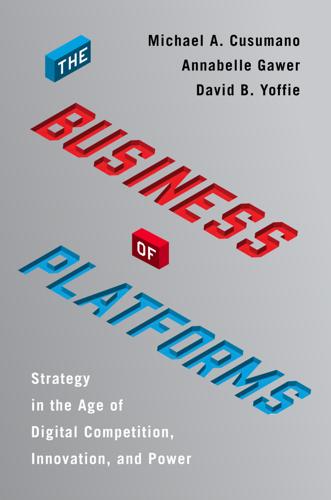
The Business of Platforms: Strategy in the Age of Digital Competition, Innovation, and Power
by
Michael A. Cusumano
,
Annabelle Gawer
and
David B. Yoffie
Published 6 May 2019
Rather—and assuming that long-distance services would eventually connect all users with telephones to each other—each additional user multiplied the potential value of the network by the number of other existing users (nodes) already connected. Today, we refer to the network dynamic described here as Metcalfe’s law, after Robert Metcalfe, the primary inventor of the Ethernet local networking technology during the early 1970s. Metcalfe argued that the value of a communications network was the same as the number of links between its nodes. He described this relationship with a simple equation: For a network of n nodes, the value of the network is n(n – 1)/2.
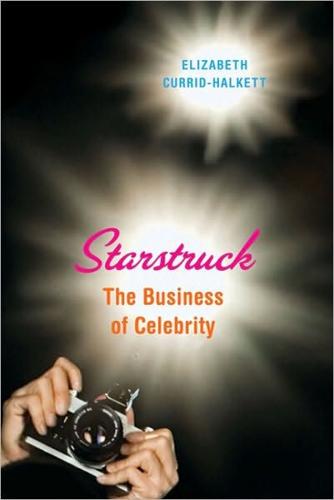
Starstruck: The Business of Celebrity
by
Currid
Published 9 Nov 2010
Such a network is present if the nodes’ degree frequency distributes according to the power distribution. 14. Metcalfe’s law is a way to observe the increased benefits obtained as more people engage in the network. See Gilder, Telecosm. Reed’s law also looks at the exponential benefits to social networks. David Reed argues that Robert Metcalfe does not fully capture the extent to which additional members of a social network produce exponential connections to members (Reed, “The Law of the Pack”). 15. Social network analysts more formally call this the difference between an individual’s positions in a network and cause for his or her participation in some network and position in that network. 16.

The Battery: How Portable Power Sparked a Technological Revolution
by
Henry Schlesinger
Published 16 Mar 2010
“This Western Union seems to me very like collecting all the paupers in the State and arranging them into a union so as to make rich men of them,” quipped a man of finance. Of course, Western Union eventually succeeded for a variety of reasons, the most interesting of which is a nineteenth-century version of Metcalfe’s Law. Named for Robert Metcalfe, an engineer at Xerox PARC and coinventor of Ethernet, the law simply states that a network increases in value as more users (or communicating devices) are added to it. Stated another way, one electromagnetic telegraph was useless, two marginally better, and six better still. Specifically, a network’s value is proportional to the square of the number of devices or users.
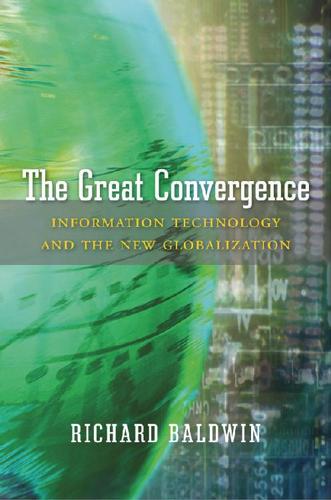
The Great Convergence: Information Technology and the New Globalization
by
Richard Baldwin
Published 14 Nov 2016
George Gilder observed that bandwidth grows three times more rapidly than computer power—doubling every six months. This allows transmission advances to help relax computing and storage constraints. Advances in data transmission, processing, and storage amplify each other. This is the economic basis of “the cloud” and its various uses. Robert Metcalfe asserted that the usefulness of a network rises with the square of the number of users. When the number of network users is, say, 100,000, the number of possible new connections created by adding one more user is 100,000. When there are 200,000 users, adding one more creates 200,000 new connections.
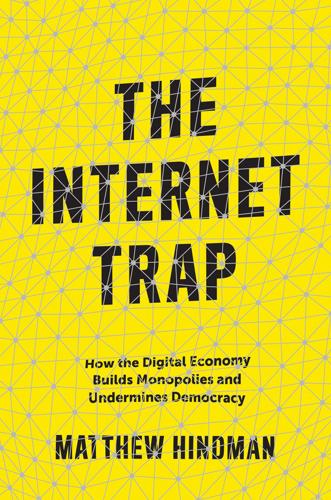
The Internet Trap: How the Digital Economy Builds Monopolies and Undermines Democracy
by
Matthew Hindman
Published 24 Sep 2018
A 18 • Chapter 2 social network with no users is useless, while a search engine or an online app like Google Docs might still be valuable even before becoming popular. Confusing different sorts of scale economies leads to misunderstandings and ultimately bad policy. Second, there is the persistent misuse of “Metcalfe’s Law,” a rule of thumb—and definitely not a real law—named after ethernet inventor Robert Metcalfe. As popularly understood, Metcalfe’s Law claims that the value of a network increases with the square of the number of connected users. A network that connected a hundred users, for example, would be a hundred times more valuable than than a network that connected ten. The endorsement of Metcalfe’s Law has been repeated at the highest levels of public policy.
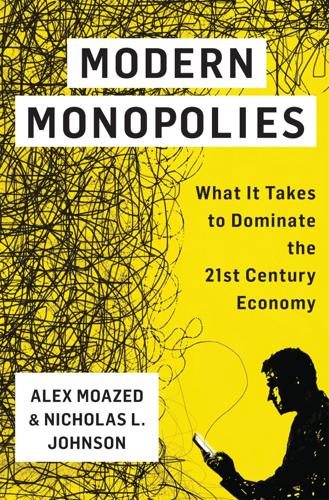
Modern Monopolies: What It Takes to Dominate the 21st Century Economy
by
Alex Moazed
and
Nicholas L. Johnson
Published 30 May 2016
Something has a network effect when the behavior of other users has a direct impact on the value that you will get out of the same service. The classic example of this kind of effect is a telephone network that gets more valuable to each individual user as more people join its network (see Figure 7.1). Metcalfe’s Law, named after one of the inventors of Ethernet, Robert Metcalfe, suggested that the value of a network is proportional to the square of the number of connected users in a system (network value = n2). Figure 7.1. Network effects in a telephone network: Value grows as the number of connections increases. As more users join a network, the number of possible unique connections within the network grows according to the function: (n2 – n)/2, where n represents the number of users.

Digital Disconnect: How Capitalism Is Turning the Internet Against Democracy
by
Robert W. McChesney
Published 5 Mar 2013
The dark side of network effects is that rich nodes get richer. Metcalfe’s law, which states that the value of a network increases in proportion to the square of connections, creates winner-take-all markets, where the gap between the number one and number two players is typically large and growing.”12 Bob Metcalfe, inventor of the Ethernet protocol that wires computers together, regarded the network effect as so prevalent that he formulated the law that goes by his name: the usefulness of a network increases at an accelerating rate as you add each new person to it.13 Google search is an example; the quality of its algorithm improves with more users, leaving other search engines with a less effective and attractive product.

Silent Spring
by
Rachel Carson
,
Linda Lear
and
Edward O. Wilson
Published 1 Jan 1962
The amount of food available, conditions of weather and climate, the presence of competing or predatory species, all are critically important. "The greatest single factor in preventing insects from overwhelming the rest of the world is the internecine warfare which they carry out among themselves," said the entomologist Robert Metcalf. Yet most of the chemicals now used kill all insects, our friends and enemies alike. The second neglected fact is the truly explosive power of a species to reproduce once the resistance of the environment has been weakened. The fecundity of many forms of life is almost beyond our power to imagine, though now and then we have suggestive glimpses.

Augmented: Life in the Smart Lane
by
Brett King
Published 5 May 2016
In the 1980s, Sun Microsystems, HP and other companies started to dominate enterprise computing platforms for accounting and basic enterprise systems. However, the personal computer was about to revolutionise the workplace environment too, primarily as a result of emerging networking technology. In 1979, Robert Metcalfe founded 3Com, expanding on the work Xerox Palo Alto Research Center (PARC) had done in the early 1970s on local and wide area network (LAN/WAN) Ethernet technology. Initially, the software that could utilise these LAN-based protocols was limited to simple tasks like file sharing, printing files or sending emails.
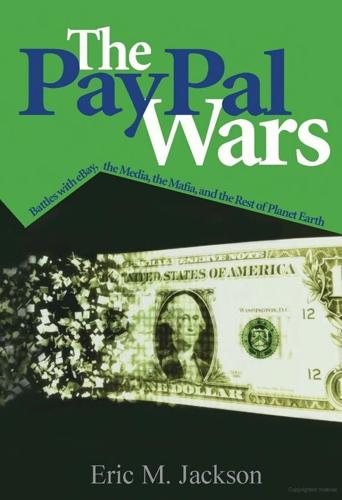
The Paypal Wars: Battles With Ebay, the Media, the Mafia, and the Rest of Planet Earth
by
Eric M. Jackson
Published 15 Jan 2004
Similarly, the advantage of participating in a payments service like PayPal increases as the number of other users goes up. If only a handful of people in the world accept money through PayPal, there is little benefit to taking the time to create an account. But if PayPal can be used to pay millions of people, the account is much more valuable. Robert Metcalfe, the inventor of Ethernet and founder of 3Com, coined Metcalfe’s Law as a way of understanding the power of networks. He claimed that the value of a network equals the square of its users, implying that a network with twice as many users as a competitor is four times as valuable.4 Given Peter’s firm belief in the importance of quickly scaling up our network, it didn’t surprise anyone that the calmness he displayed at the disappointing Scotty event was absent following the dotBank and X.com launches.
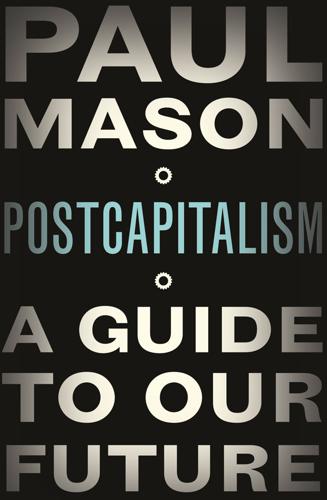
Postcapitalism: A Guide to Our Future
by
Paul Mason
Published 29 Jul 2015
Vail realized that networks create something extra, for free. In addition to utility for the user of a telephone and revenue for the owner, he noticed a third thing: the more people join the network, the more useful it becomes to everybody. The problem comes when you try to measure and capture that third thing. Robert Metcalfe, the inventor of the Ethernet switch, claimed in 1980 that a network’s value is ‘the number of users squared’. So while the cost of building a network rises in a straight line, its value rises in an exponential curve.38 By implication the art of doing business in a knowledge economy is to capture everything between the straight line and the rising curve.

Markets, State, and People: Economics for Public Policy
by
Diane Coyle
Published 14 Jan 2020
Yet for customers signed up to online billing, a large financial incentive to cut their usage worked better than either of the other alternatives, reducing consumption by 10%. Confusingly, this favorable impact was greatly reduced when the customers also received the information about what other people were paying. Paul Dolan and Robert Metcalfe (2015), “Neighbors, Knowledge, and Nuggets: Two Natural Field Experiments on the Role of Incentives on Energy Conservation,” Becker Friedman Institute for Research in Economics, Working Paper No. 2589269 (April), https://ssrn.com/abstract=2589269 or http://dx.doi.org/10.2139/ssrn.2589269. Figure 5.5.

Boom: Bubbles and the End of Stagnation
by
Byrne Hobart
and
Tobias Huber
Published 29 Oct 2024
This approach, which took advantage of the interactive capacities of the mouse, proved enormously popular and remains the standard today. 252 Alto computers could even talk to one another through Ethernet, another PARC technology. Neither the Alto nor the Ethernet protocol were commercial successes—at least not for Xerox. Ethernet developer Robert Metcalfe left PARC to found 3COM, which commercialized the protocol. Once Ethernet was being promoted by a small independent company rather than by the titanic Xerox, other big firms were willing to adopt it. As Metcalfe put it, “I tell people I didn’t get rich inventing Ethernet. I got rich selling it!”
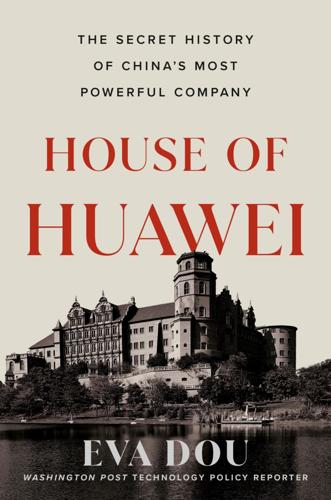
House of Huawei: The Secret History of China's Most Powerful Company
by
Eva Dou
Published 14 Jan 2025
The deal never firmed up, and it was unclear if it even could have passed regulatory approval, with both companies being military suppliers in their home nations. But word of the talks trickled back to Chambers at Cisco.[20] Perhaps that was the point. Huawei’s savior turned out to be 3Com, a Cisco rival. Founded in 1979 by the inventor of Ethernet, Robert Metcalfe, 3Com was an industry forefather. It was now struggling to keep up. Its CEO, Bruce Claflin, a bespectacled IBM veteran with salt-and-pepper hair, admitted to a personal rivalry with Cisco’s Chambers. “My wife said she loved me, but that John Chambers knew a lot more than I did,” Claflin told The New York Times.

Age of Discovery: Navigating the Risks and Rewards of Our New Renaissance
by
Ian Goldin
and
Chris Kutarna
Published 23 May 2016
We’re bad at guessing where present breakthroughs will take us: I predict the Internet . . . will soon go spectacularly supernova and in 1996 catastrophically collapse . . . The Internet’s naïve flat-rate business model is incapable of financing the new capacity it would need to serve continued growth, if there were any, but there won’t be, so no problem. —Robert Metcalfe, co-inventor of Ethernet and founder of 3Com, in 199547 We’re even worse at guessing what future breakthroughs will be. “Where are the flying cars?” is the perfect refrain to illustrate how our thinking gets trapped inside present paradigms. In the 1950s and 1960s, suddenly everyone drove cars and rode in airplanes.

Nerds on Wall Street: Math, Machines and Wired Markets
by
David J. Leinweber
Published 31 Dec 2008
Notes 1. Sergio Focardi, Peter Kolm, and Frank Fabozzi, “New Kids on the Block,” Journal of Portfolio Management 30, no. 4 (Fall 2004): 42–53. The first article in the issue, by Andy Lo, “The Adaptive Market Hypothesis,” is an excellent in-depth discussion of the modern view of market efficiency. 2. Robert Metcalfe is the inventor of Ethernet (the ubiquitous wiring of the Internet), and the founder of 3Com. His law was demonstrated first with telephones and fax machines. 3. Okay, let’s belabor them a little for Generations X and Y and the Millennials, who may have missed these back when they were everywhere, but may also pick up this book.

The Age of Entitlement: America Since the Sixties
by
Christopher Caldwell
Published 21 Jan 2020
It turns out it didn’t have to. The high-tech firms had a kind of power not envisioned in Ayn Rand’s theories of capitalism from the 1980s or in traditional models of market regulation. These firms were not new entrants to market systems but new market systems. They were networks. As the computer scientist Robert Metcalfe had shown, a network’s value increases exponentially with its growth. Over time, the most attractive thing about a network may be simply that a large number of people have already chosen it. When a network reaches critical mass, competition becomes pointless. Yes, some other company might design a “better” network, but that wouldn’t necessarily make it a competitor.

Super Thinking: The Big Book of Mental Models
by
Gabriel Weinberg
and
Lauren McCann
Published 17 Jun 2019
Two phones can make only one connection, five can make ten, and twelve can make sixty-six. Network Effects 2 phones = 1 connection 5 phones = 10 connections 12 phones = 66 connections This relationship, known as Metcalfe’s law, is named after Robert Metcalfe, the co-inventor of the networking technology Ethernet. It describes the nonlinear growth in network value when nodes are connected to one another. His law oversimplifies reality since it assumes that every node (or telephone in this case) has the same value to the network and that every node may want to contact every other, but nevertheless it serves as a decent model.
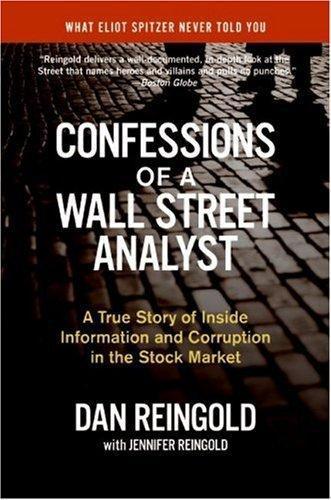
Confessions of a Wall Street Analyst: A True Story of Inside Information and Corruption in the Stock Market
by
Daniel Reingold
and
Jennifer Reingold
Published 1 Jan 2006
Reinforcing the bullish point of view was the fact that even the slow-growing Baby Bells were reporting 30 percent growth in their data services divisions, far beyond the 4–6 percent growth rates of more traditional Bell product lines. O’Dell’s and Sidgmore’s numbers would go on to become those “statistics” that everyone cited as gospel without knowing where they came from or whether they were actually true. In May of 1998, I attended the grandly named Vortex Conference, a dot-com and technology get-together organized by Bob Metcalfe, the scientist from Xerox’s famous Palo Alto Research Center who invented Ethernet, today’s standard for rapid computer networking, and later founded 3Com. It took place at the Ritz-Carlton in Laguna Niguel, California, a gorgeous resort south of Los Angeles overlooking the ocean. But no one there cared much about the surf.
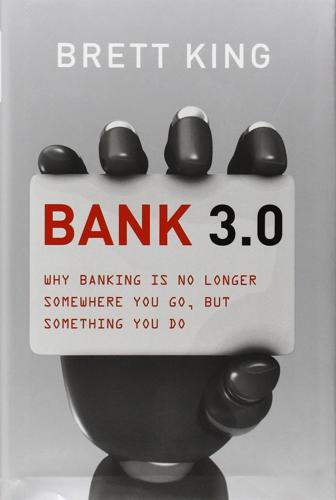
Bank 3.0: Why Banking Is No Longer Somewhere You Go but Something You Do
by
Brett King
Published 26 Dec 2012
Low-Counter: Typically a desk station within a branch where the relationship manager can sit with customers and potential clients and advise them on available products and services. Lo-Fi Prototype: A simple method of prototyping products, interfaces or applications and testing with target customers or users. LIBOR: London Interbank Offered Rate LinkedIn: An online social network for business professionals. Metcalfe’s Law: Attributed to Robert Metcalfe, this law states that the value of a telecommunications network is proportional to the square of the number of connected users of the system (n2). MFI: Microfinance Institution—an alternate form of bank found in developing countries which provides microcredit lending. MIRC: Magnetic Ink Character Recognition Mobile Portal: A website designed specifically for mobile phone interfaces and mini-browsers.
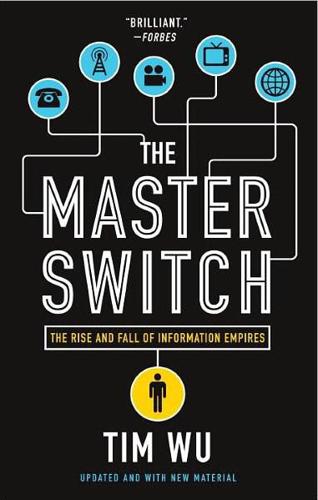
The Master Switch: The Rise and Fall of Information Empires
by
Tim Wu
Published 2 Nov 2010
These quotes and opinions were obtained in an interview with the author in June 2008. 5. To read about AT&T at the time of the Internet’s inception, see Christopher H. Sterling, Phyllis Bernt, and Martin B. H. Weiss, Shaping American Telecommunications: A History of Technology, Policy, and Economics (New York: Routledge, 2006). To read how Vint Cerf, Robert Kahn, and Robert Metcalf interacted with AT&T, see their individual entries in Laura Lambert et al., The Internet: A Historical Encyclopedia, vol. 2 (New York: MTM Publishing, 2005). 6. “A Protocol for Packet Network Intercommunication” in Jeremy M. Norman, ed., From Gutenberg to the Internet: A Sourcebook on the History of Information Technology (Novato, CA: historyofscience.com, 2005) 871–90. 7.
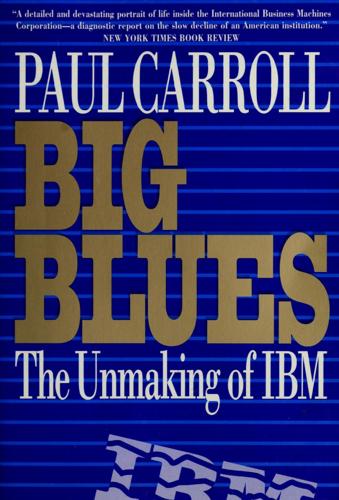
Big Blues: The Unmaking of IBM
by
Paul Carroll
Published 19 Sep 1994
The trouble has even extended beyond the loss of business among customers looking to do new applications: Many of IBM’s customers are even considering taking the soft ware they’ve written painstakingly for their mainframes and rewriting the soft ware for networks of small machines. This used to be unthinkable. The cost of rewriting is so high and the risk of error when redoing millions of lines of software code is so great that IBM felt it had existing mainframe customers locked into its systems forever. But Bob Metcalfe, publisher of InfoWorld, a big PC publication, says that every company he talks to is at least considering disposing of some mainframes so they can move to PCs. He even jokes that he knows the exact moment when the mainframe will disappear forever: midnight on New Year’s Eve, 1999. The reason is that IBM, in design ing the current style of mainframe in the 1960s, didn’t consider what would happen in the year 2000.

The Age of Spiritual Machines: When Computers Exceed Human Intelligence
by
Ray Kurzweil
Published 31 Dec 1998
—Ken Olson, 1977 “640,000 bytes of memory ought to be enough for anybody.” —Bill Gates, 1981 “Long before the year 2000, the entire antiquated structure of college degrees, majors and credits will be a shambles.” —Alvin Toffler “The Internet will catastrophically collapse in 1996.” —Robert Metcalfe (inventor of Ethernet), who, in 1997, ate his words (literally) in front of an audience Now I get to toot my own horn, and can share with you those predictions of mine that worked out particularly well. But in looking back at the many predictions I’ve made over the past twenty years, I will say that I haven’t found any that I find particularly embarrassing (except, maybe, for a few early business plans).

The Idea Factory: Bell Labs and the Great Age of American Innovation
by
Jon Gertner
Published 15 Mar 2012
For all these reasons, the technology couldn’t attract enough users to attract even more users. “To start up a service, you have to think about: I have one, you don’t have one—so I can’t talk to you,” Irwin Dorros says. “So I can only talk to you if you have one. So how do you get a critical mass of people that have them?” Many years later, a computer engineer named Robert Metcalfe would surmise that the value of a networked device increases dramatically as the number of people using the network grows. The larger the network, in other words, the higher the value of a device on that network to each user.36 This formulation—sometimes known as Metcalfe’s law—can help explain the immense appeal of the telephone system and Internet.
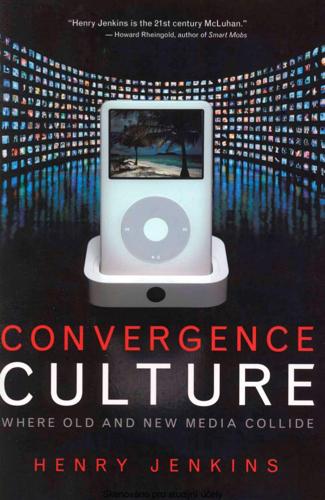
Convergence Culture: Where Old and New Media Collide
by
Henry Jenkins
Published 31 Jul 2006
Garfinkel, James Gee, Lisa Gitelman, Wendy G o r d o n , N i c k H a h n , M a r y Beth Haralovich, John Hartley, Heather Hendershott, Matt H i l l s , M i m i Ito, M a r k Jancovich, Steven Johnson, Sara G w e n l l i a n Jones, Gerard Jones, Louise Kennedy, Christina Klein, Eric Klopfer, Robert Kozinets, Ellen Kushner, Christopher Ireland, Jessica Irish, K u r t Lancaster, Brenda Laurel, C h a p Lawson, Geoffrey L o n g , Peter L u d l o w , Davis Maston, Frans M a y r a , Robert Metcalfe, Scott M c C l o u d , Grant McCracken, Jane M c G o n i g a l , E d w a r d M c N a l l y , Tara McPherson, Jason Mittell, Janet Murray, Susan J. Napier, Angela N d l i a n i s , Annalee N e w i t z , Tasha Oren, Ciela Pearce, Steven Pinker, Warren Sack, Katie Salens, N i c k Sammond, K e v i n Sandler, Greg Shaw, Greg Smith, Janet Sonenberg, Constance Steinkuehler, M a r y Stuckey, D a v i d Surman, Steven J.

WTF?: What's the Future and Why It's Up to Us
by
Tim O'Reilly
Published 9 Oct 2017
,” Harvard Business Law Review 4 (2014): 235, University of Pennsylvania Institute for Law & Economics, Research Paper No. 14–41, posted December 18, 2014, https://ssrn.com/abstract=2539098. 293 “if not more than, the bottom line”: Etsy, “Building an Etsy Economy: The New Face of Creative Entrepreneurship,” 2015, retrieved April 4, 2017, https://extfiles.etsy.com/Press/reports/Etsy_NewFaceofCreativeEntrepreneur ship_2015.pdf. 293 the ouster of Chad Dickerson, Etsy’s CEO: The Associated Press, “Etsy Replaces CEO, Cuts Jobs Amid Shareholder Pressure,” ABC News, May 2, 2017, http://abcnews.go.com/Business/wireStory/etsy-replaces-ceo-cuts-jobs-amid-shareholder-pressure-47167426. 293 supported more than 10,000 jobs: “Airbnb Community Tops $1.15 Billion in Economic Activity in New York City,” Airbnb, May 12, 2015, https://www.airbnb.com/press/news/airbnb-community-tops-1-15-billion-in-economic-activity-in-new-york-city. 293 helped them stay in their home: “Airbnb Economic Impact,” Airbnb, retrieved April 4, 2017, http://blog.airbnb.com/economic-impact-airbnb/. 294 A third-party economic study: Peter Cohen, Robert Hahn, Jonathan Hall, Steven Levitt, and Robert Metcalfe, “Using Big Data to Estimate Consumer Surplus: The Case of Uber,” National Bureau of Economic Research, Working Paper No. 22627, September 2016, doi:10.3386/w22627. 294 nine million third-party sellers: Duncan Clark, Alibaba: The House That Jack Built (New York: Harper, 2016), 5. 294 in order to favor more lucrative sales by big brands: Ina Steiner, “eBay Makes Big Promises to Small Sellers as SEO Penalty Still Stings,” eCommerce Bytes, April 23, 2015, http://www.ecommercebytes.com/cab/abn/y15/m04/i23/s02. 294 half of all private sector employment: “SBA Advocacy: Frequently Asked Questions” Small Business Administration, September 2012, retrieved May 12, 2017, https://www.sba.gov/sites/default/files/FAQ_Sept_2012.pdf. 295 “now drying the clothes”: Steve Baer, “The Clothesline Paradox,” CoEvolution Quarterly, Winter 1975, retrieved April 3, 2017, http://www.wholeearth.com/issue/2008/article/358/the.clothesline.paradox. 296 value as and if created: Mariana Mazzucato, The Entrepreneurial State (London: Anthem, 2013), 185–87. 296 “a minuscule fraction”: William D.
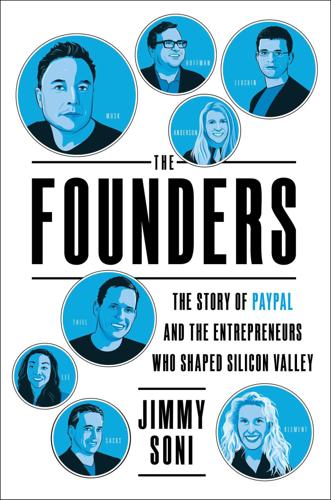
The Founders: The Story of Paypal and the Entrepreneurs Who Shaped Silicon Valley
by
Jimmy Soni
Published 22 Feb 2022
Yes,” Harris remembers reasoning. “But it would have taken a lot longer and a huge amount of resources to get there. And it’s not at all clear which side would have won.” To Harris, the merger wasn’t just defensive—it was a strategic piece of offense. He cited Metcalfe’s Law. Devised in the 1980s by Robert Metcalfe, the inventor of Ethernet, the basic idea was simple: The value of a network grows by the square of the size of the network. If a computer network contains five machines, the total network has a value of 25—5 squared; if it has a thousand machines, the network has a value of 1,000,000—1,000 squared.

Facebook: The Inside Story
by
Steven Levy
Published 25 Feb 2020
It cost $85 a month. Over the next few days, Thefacebook began a relentless takeover of the Harvard student body. As more Harvard students signed up, the chances increased that they would find profiles of their friends, of people they might like to have as friends. In the early 1980s, computer scientist Bob Metcalfe wrote about the network effect, postulating that the value of a network increases exponentially with the number of people joining (this became known as Metcalfe’s law). Hour by hour, the impetus for students to sign up began to flip from engaging in a diverting pastime to an absolute necessity, as not being on Thefacebook made you a virtual exile on the physical campus.
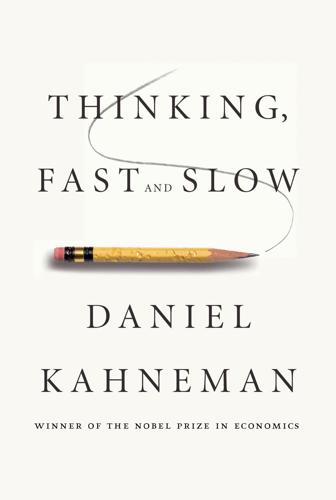
Thinking, Fast and Slow
by
Daniel Kahneman
Published 24 Oct 2011
Krueger, ed., Measuring the Subjective Well-Being of Nations: National Account of Time Use and Well-Being (Chicago: University of Chicago Press, 2009). Joseph E. Stiglitz, Amartya Sen, and Jean-Paul Fitoussi, Report of the Commission on the Measurement of Economic Performance and Social Progress. Paul Dolan, Richard Layard, and Robert Metcalfe, Measuring Subjective Well-being for Public Policy: Recommendations on Measures (London: Office for National Statistics, 2011). Irrational is a strong word: The view of the mind that Dan Ariely has presented in Predictably Irrational: The Hidden Forces That Shape Our Decisions (New York: Harper, 2008) is not much different from mine, but we differ in our use of the term.
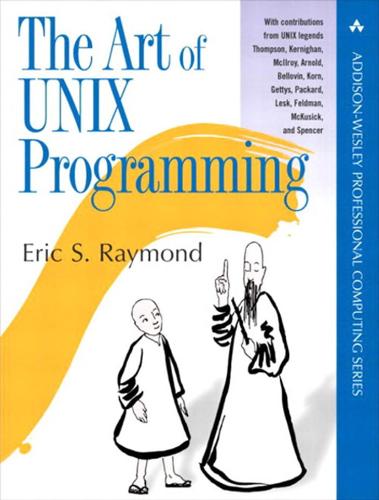
The Art of UNIX Programming
by
Eric S. Raymond
Published 22 Sep 2003
No other operating system has shone simultaneously as a research vehicle, a friendly host for technical custom applications, a platform for commercial-off-the-shelf business software, and a vital component technology of the Internet. Confident predictions that Unix would wither away, or be crowded out by other operating systems, have been made yearly since its infancy. And yet Unix, in its present-day avatars as Linux and BSD and Solaris and MacOS X and half a dozen other variants, seems stronger than ever today. Robert Metcalf [the inventor of Ethernet] says that if something comes along to replace Ethernet, it will be called “Ethernet”, so therefore Ethernet will never die.[4] Unix has already undergone several such transformations. -- Ken Thompson At least one of Unix's central technologies — the C language — has been widely naturalized elsewhere.

The Friendly Orange Glow: The Untold Story of the PLATO System and the Dawn of Cyberculture
by
Brian Dear
Published 14 Jun 2017
Maggs (1997); Matheny (1997); McGinty (1997); Nelson (1987); Ozzie and Kawell (1997); Sides (1997); Woolley (1997). Other interviews: Bitzer (1975). Published Sources Barnett, D. C. “A Suicide Prevention Incident Involving Use of the Computer.” Professional Psychology 13(4), August 1982, 565–70. DalSanto, Bob. “The Wonderful World of PLATO.” DI, September 20, 1975, S-4, S-5. Metcalfe, Bob. “Metcalfe’s Law: A Network Becomes More Valuable as It Reaches More Users.” Infoworld 17(40), October 2, 1995, 53. Nelson. Computer Lib/Dream Machines, 93–95. Pesman, C. “PLATO Games People Play.” DI, September 20, 1975, S-2, S-3. Rheingold. Virtual Community. Springer, P. G. “PLATO’s Retreatists: The Sordid World of the Computer Addict.”

The Singularity Is Near: When Humans Transcend Biology
by
Ray Kurzweil
Published 14 Jul 2005
This term describes a network effect. If we have a network such as the Internet, its effect or value can reasonably be shown to be proportional to n Î log(n) where n is the number of nodes. Each node (each user) benefits, so this accounts for the n multiplier. The value to each user (to each node) = log(n). Bob Metcalfe (inventor of Ethernet) has postulated the value of a network of n nodes = c În2, but this is overstated. If the Internet doubles in size, its value to me does increase but it does not double. It can be shown that a reasonable estimate is that a network's value to each user is proportional to the log of the size of the network.
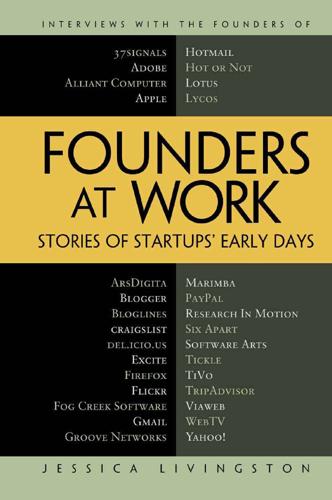
Founders at Work: Stories of Startups' Early Days
by
Jessica Livingston
Published 14 Aug 2008
I had a software program running on it that was as good as Microsoft Word—in fact it was developed by the fellow who left PARC and went to Microsoft and built the Office product line for them, Charles Simonyi. I had a great mail system on it that could mail to anybody in the ARPANET community, as well as within Xerox. It was on the precursor of the 3Com Ethernet technology, developed by Bob Metcalfe, who later left PARC and started 3Com. The network connected the personal computers to laser printers. We had a 60-page-a-minute black-and-white laser printer, a 10-page-a-minute color printer. We had a file server where you could store files and share them for projects. All of these computers were connected in both an internal and external network throughout Xerox Corporation and into the ARPANET, which was the precursor of the Internet.

Engineering Security
by
Peter Gutmann
The same sorts of analyses that lead to Zeno’s paradox are also popular in the computing field to show that certain things just can’t work. When Xerox/DIX Ethernet was first proposed, technical journals contained detailed analyses showing that it couldn’t work [117][118][119][120], which is no doubt why the entire world is currently using token ring instead of Ethernet. This led to Bob Metcalfe’s famous observation that “Ethernet works in practice but not in theory”. A similar problem exists with many computer security mechanisms. Consider the use of SMS-based authentication for Internet banking. This security mechanism has the bank send the user an SMS text message containing a one-time code that’s used to authorise a banking transaction.